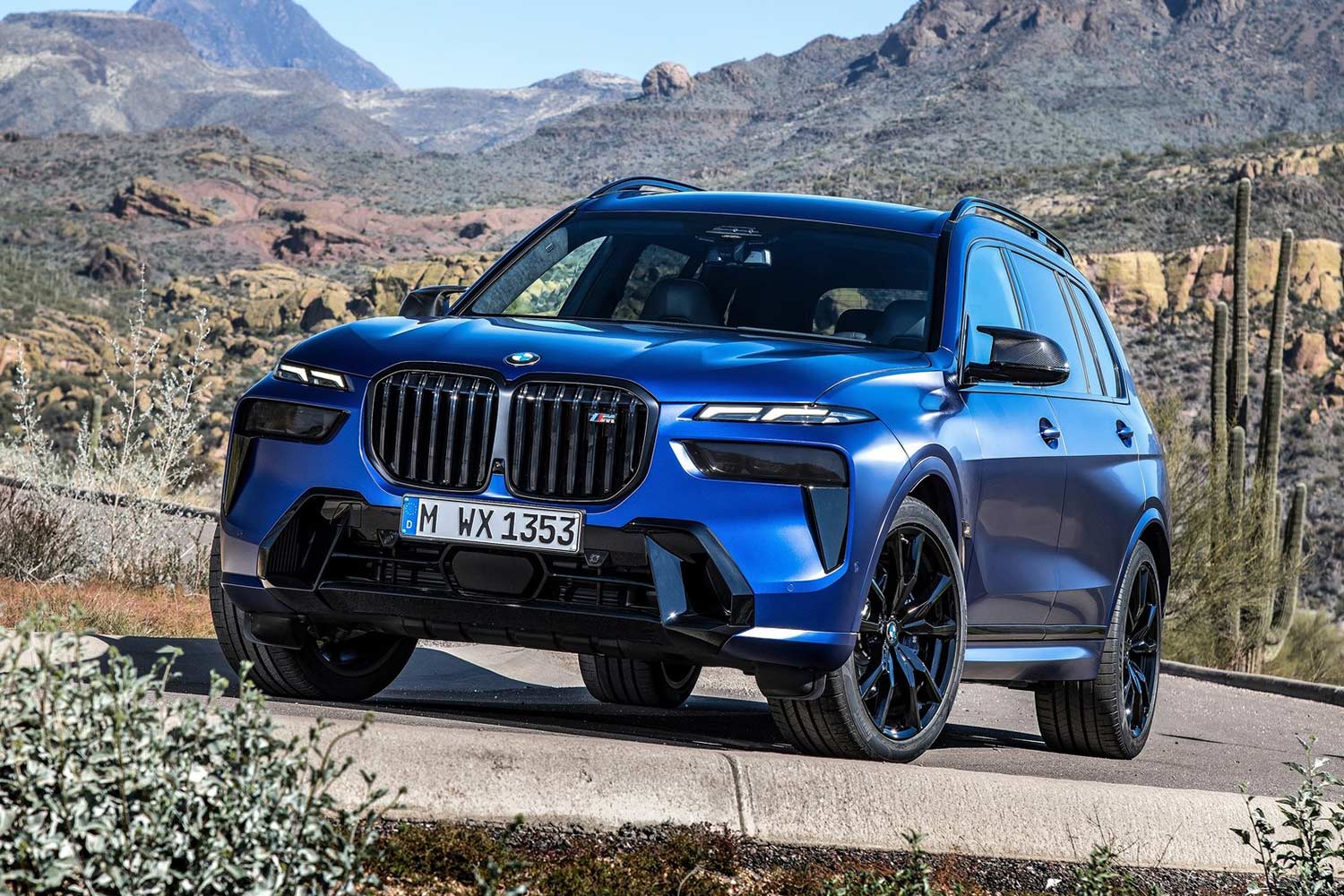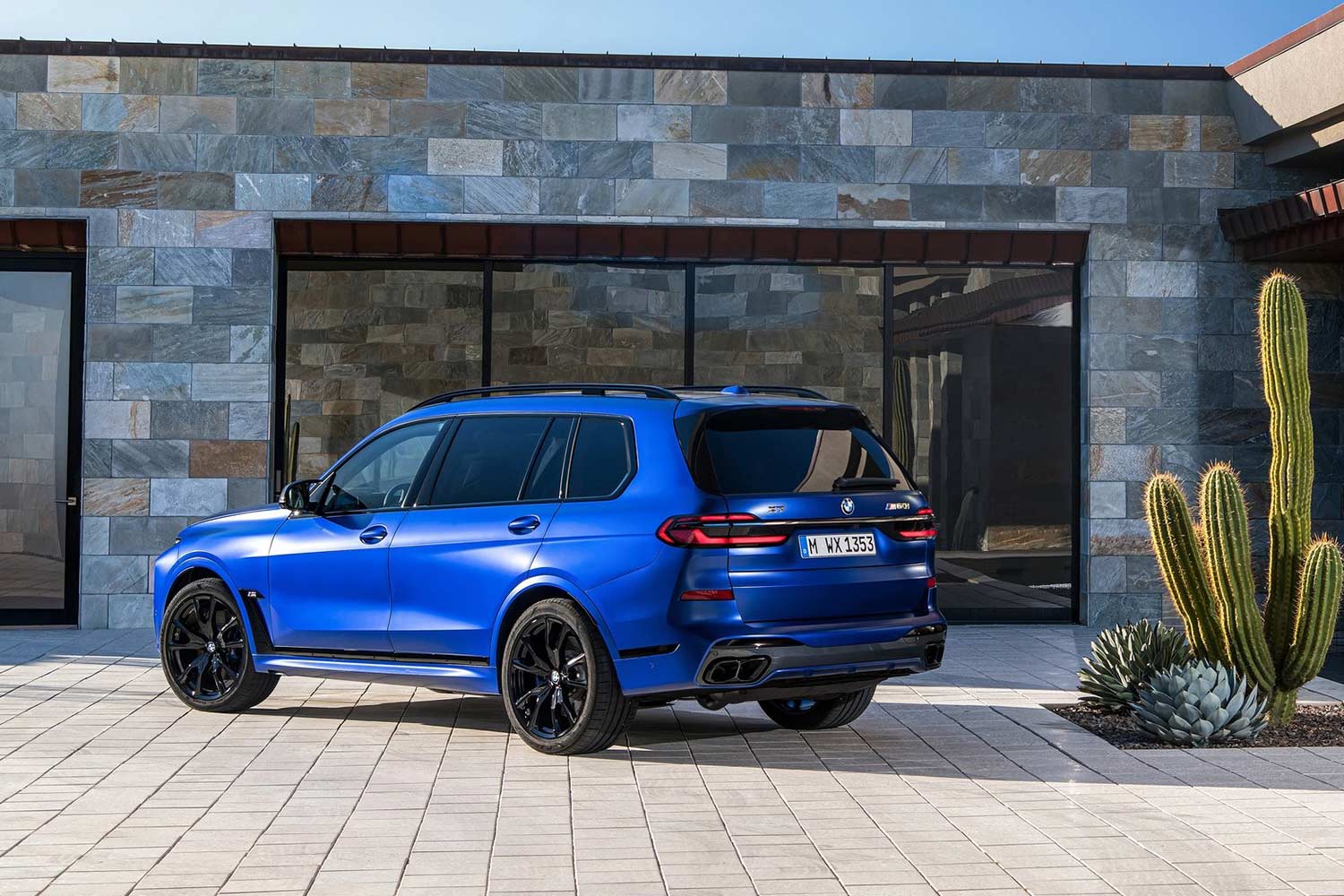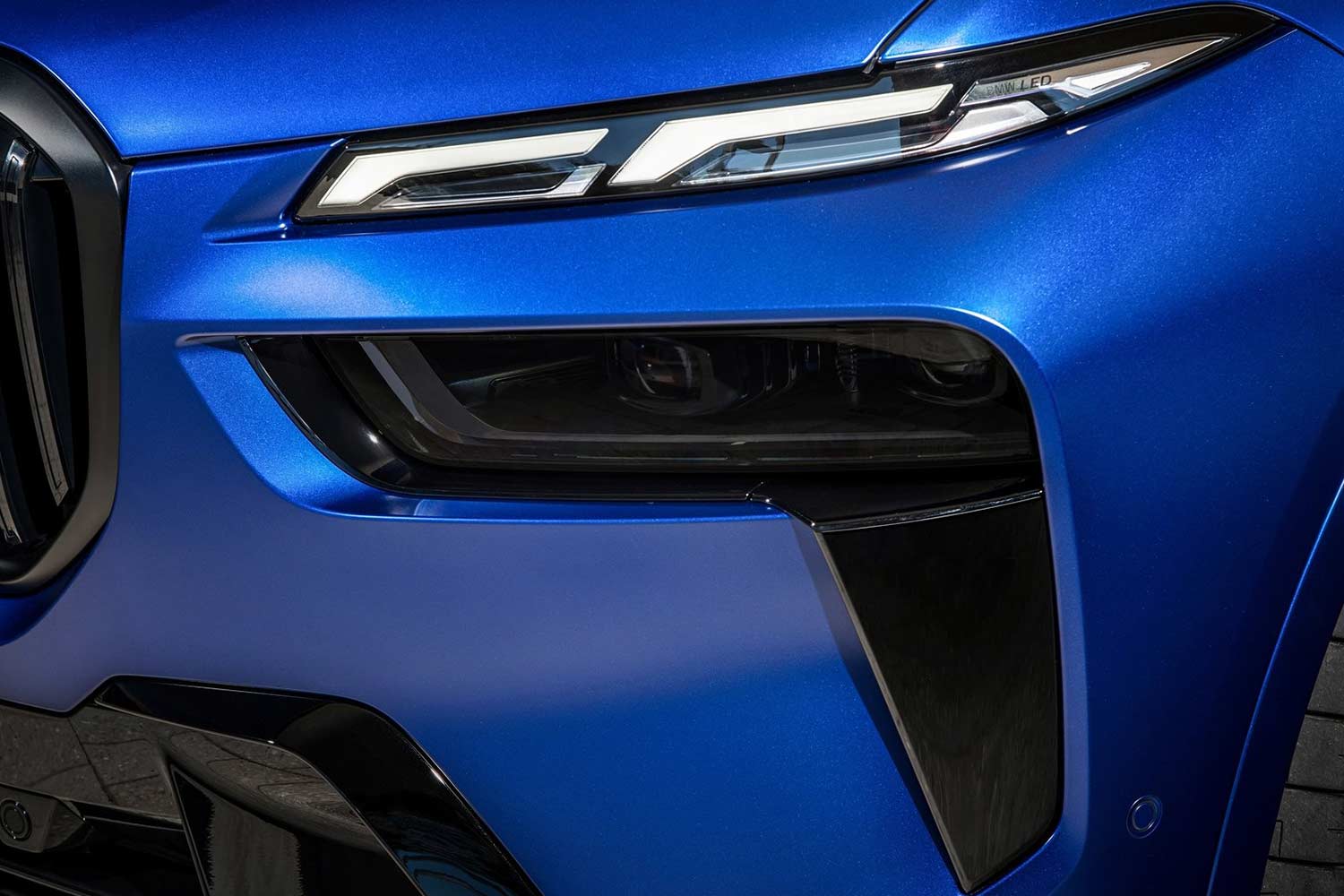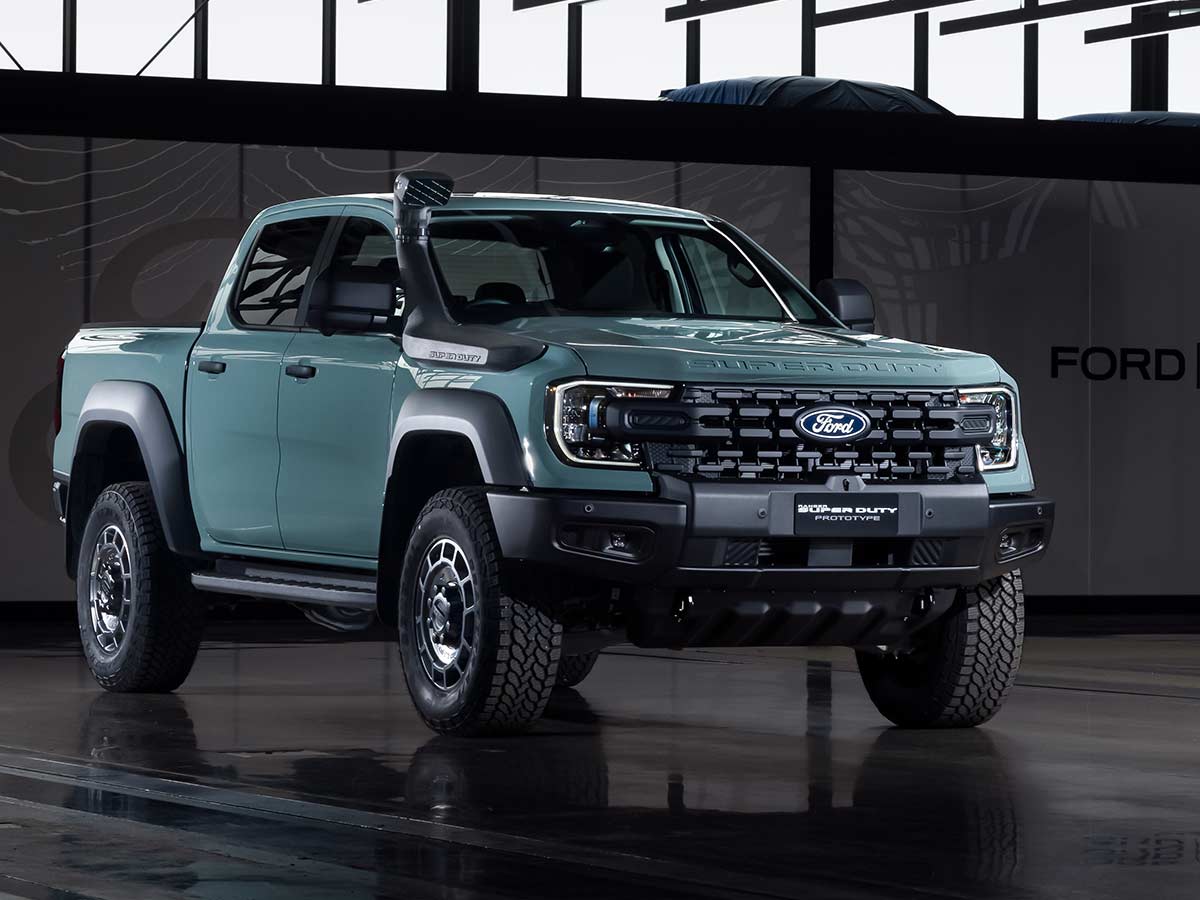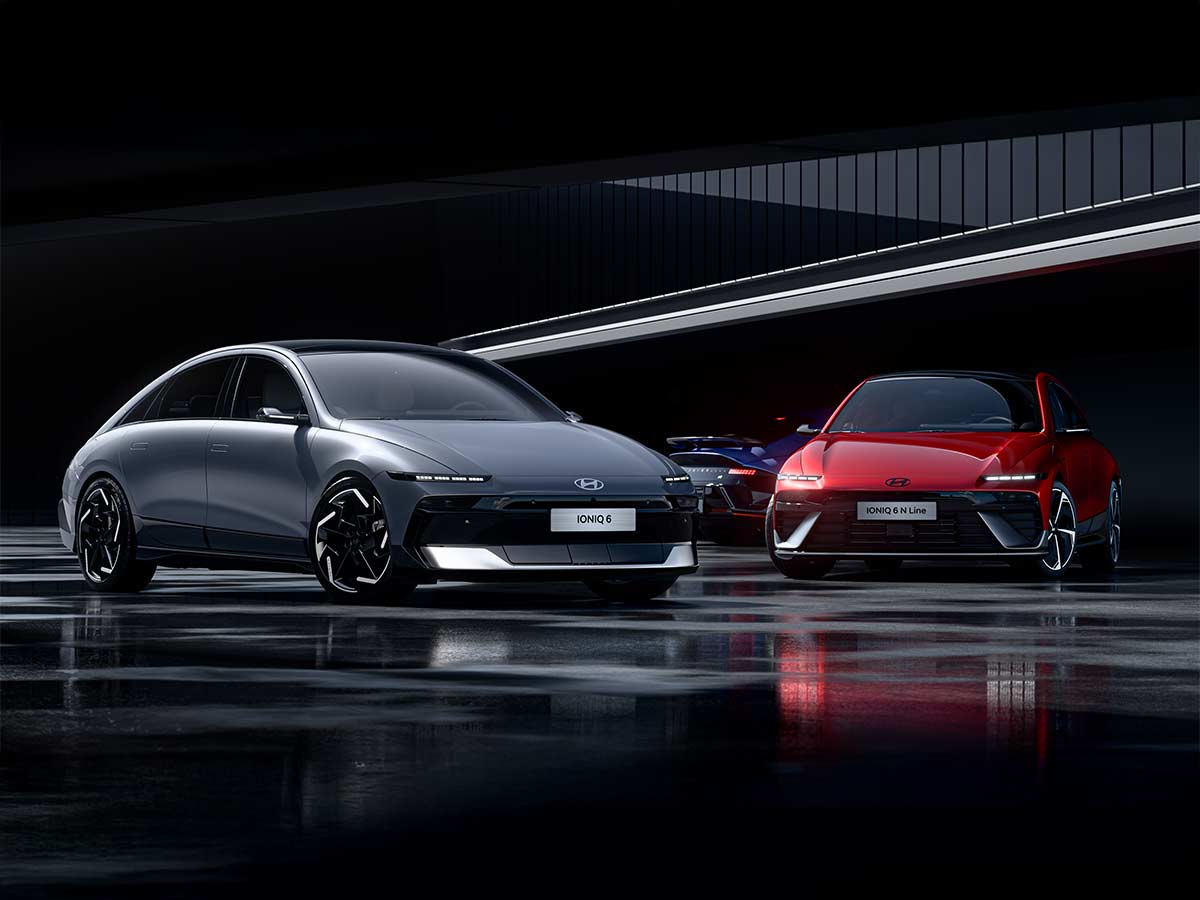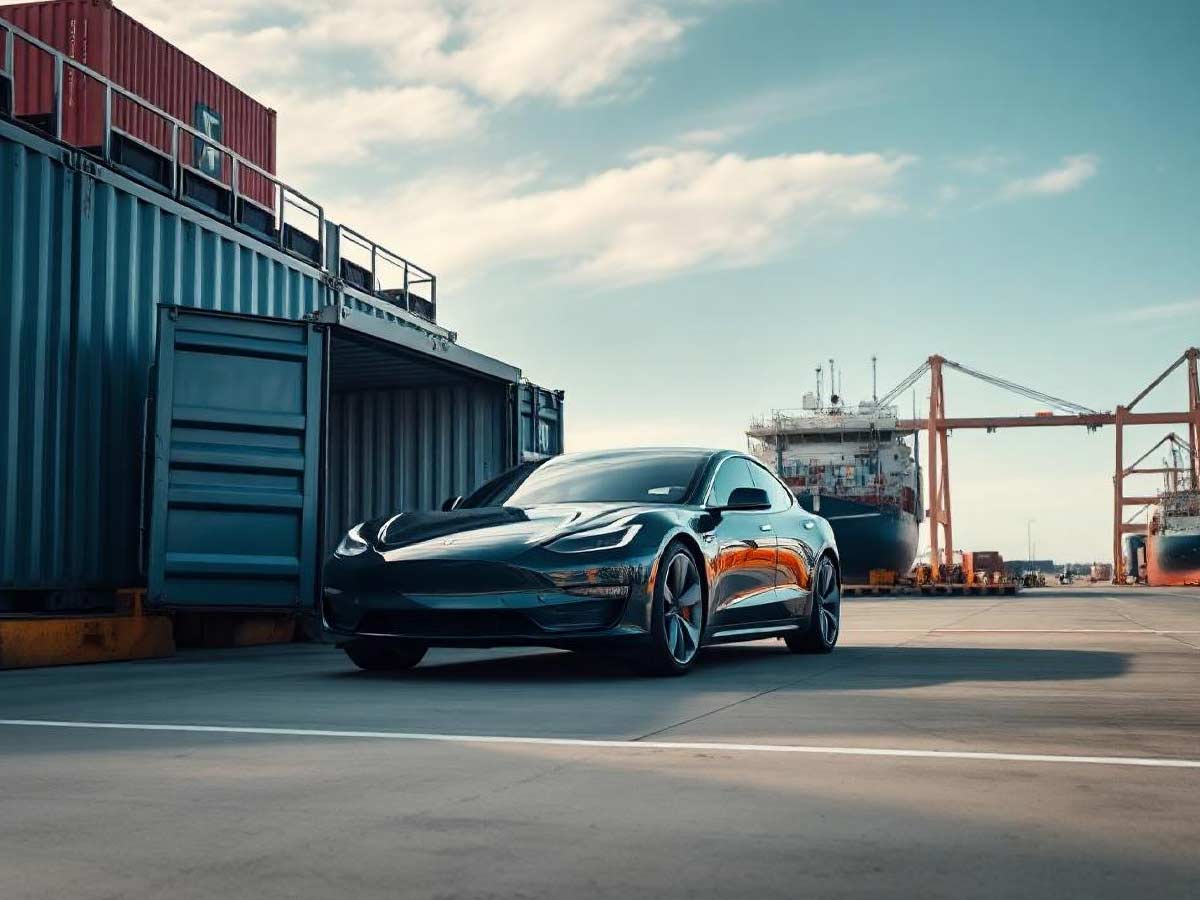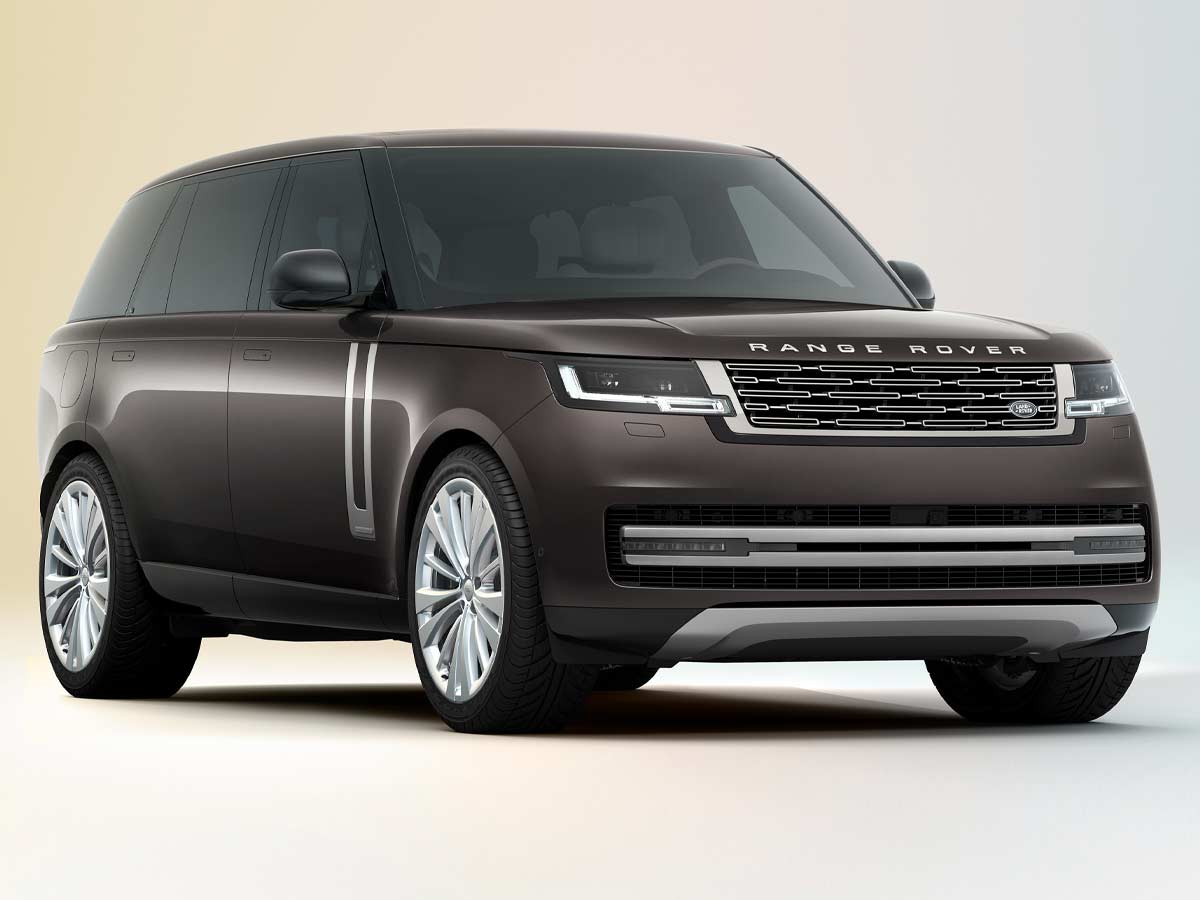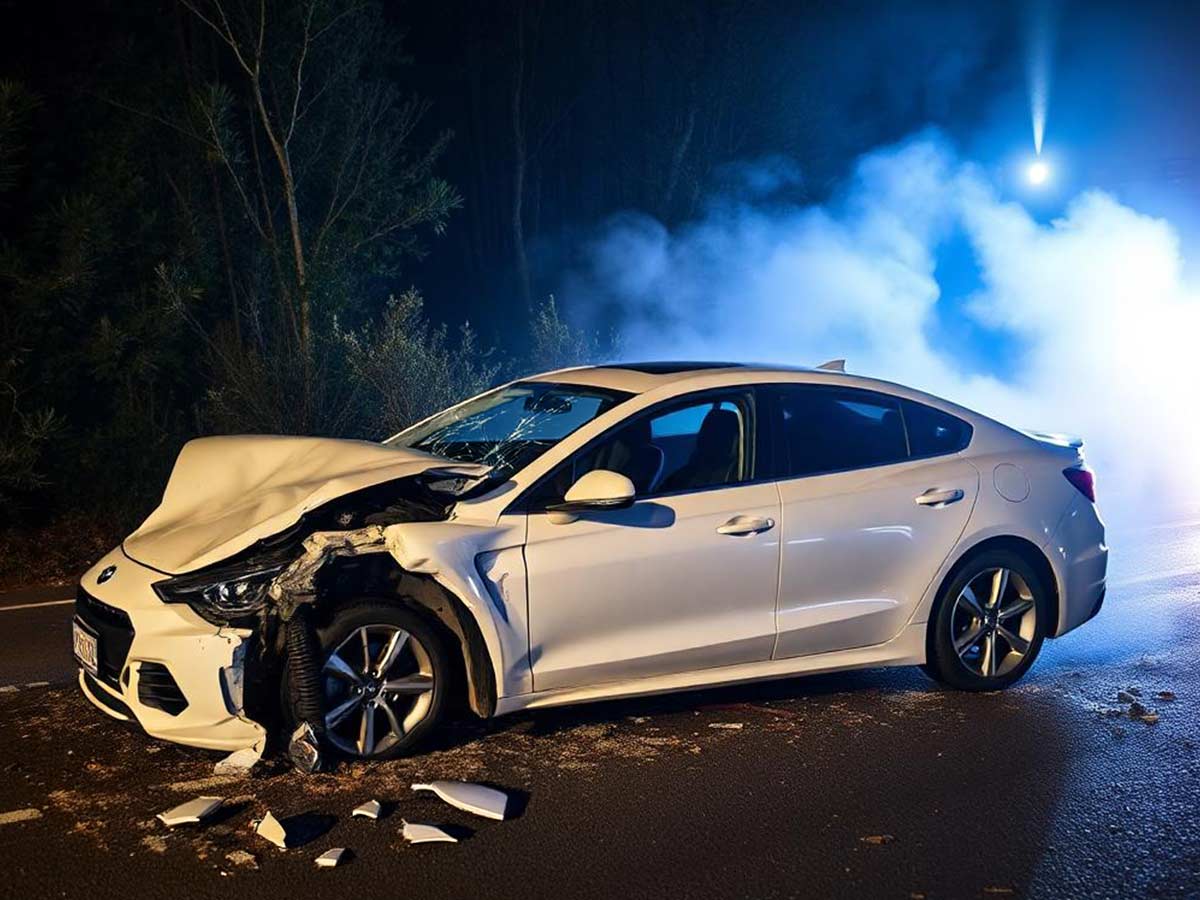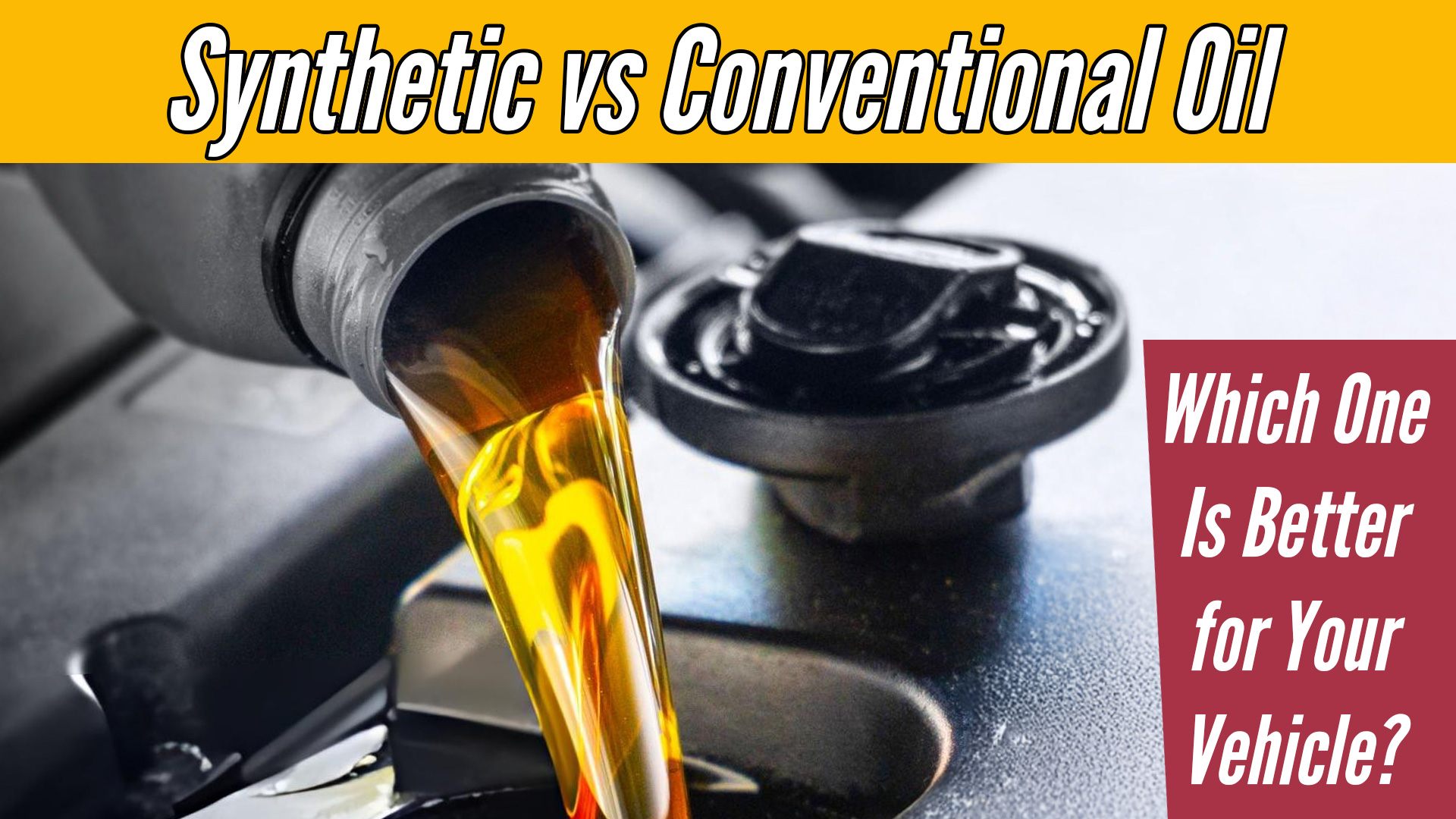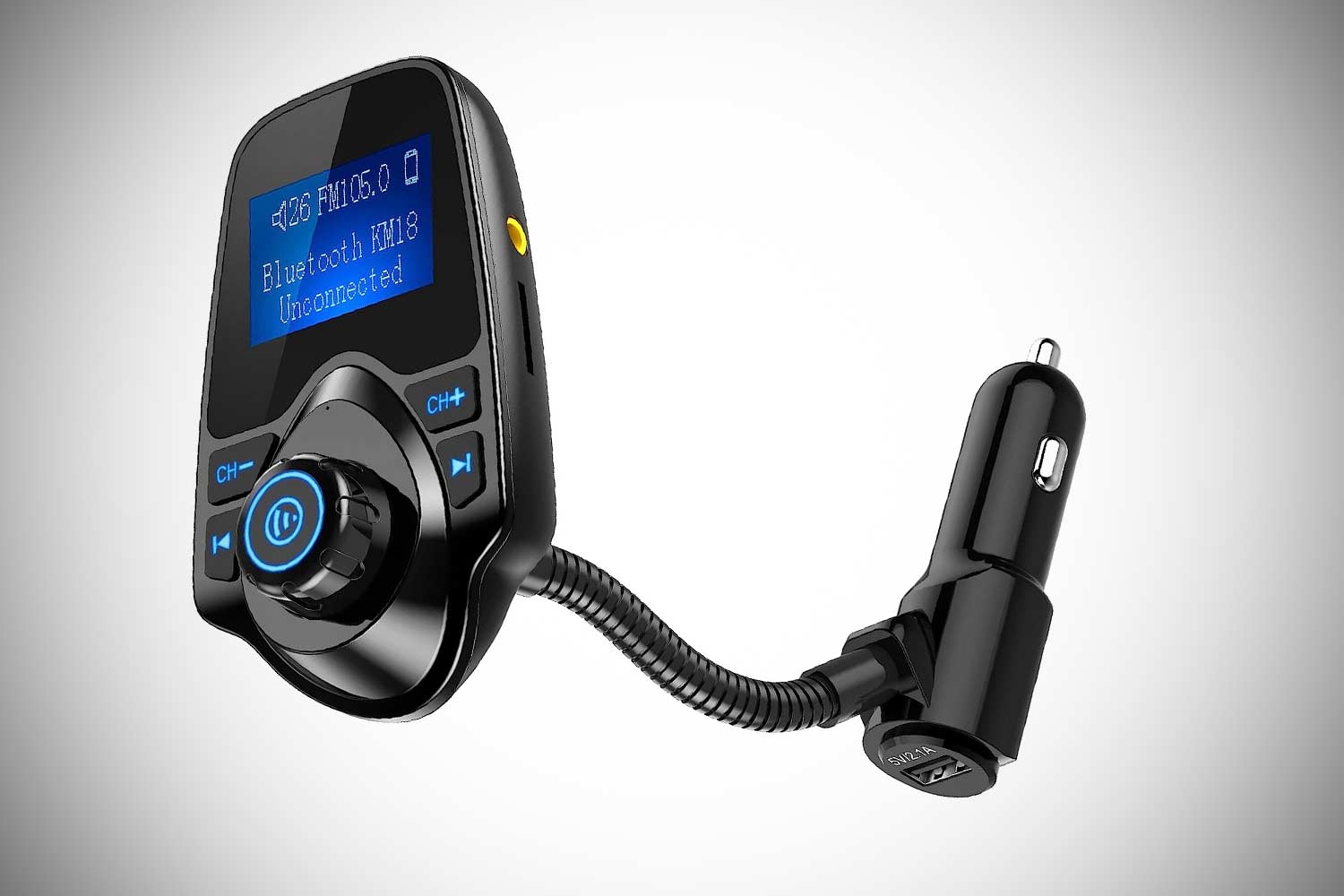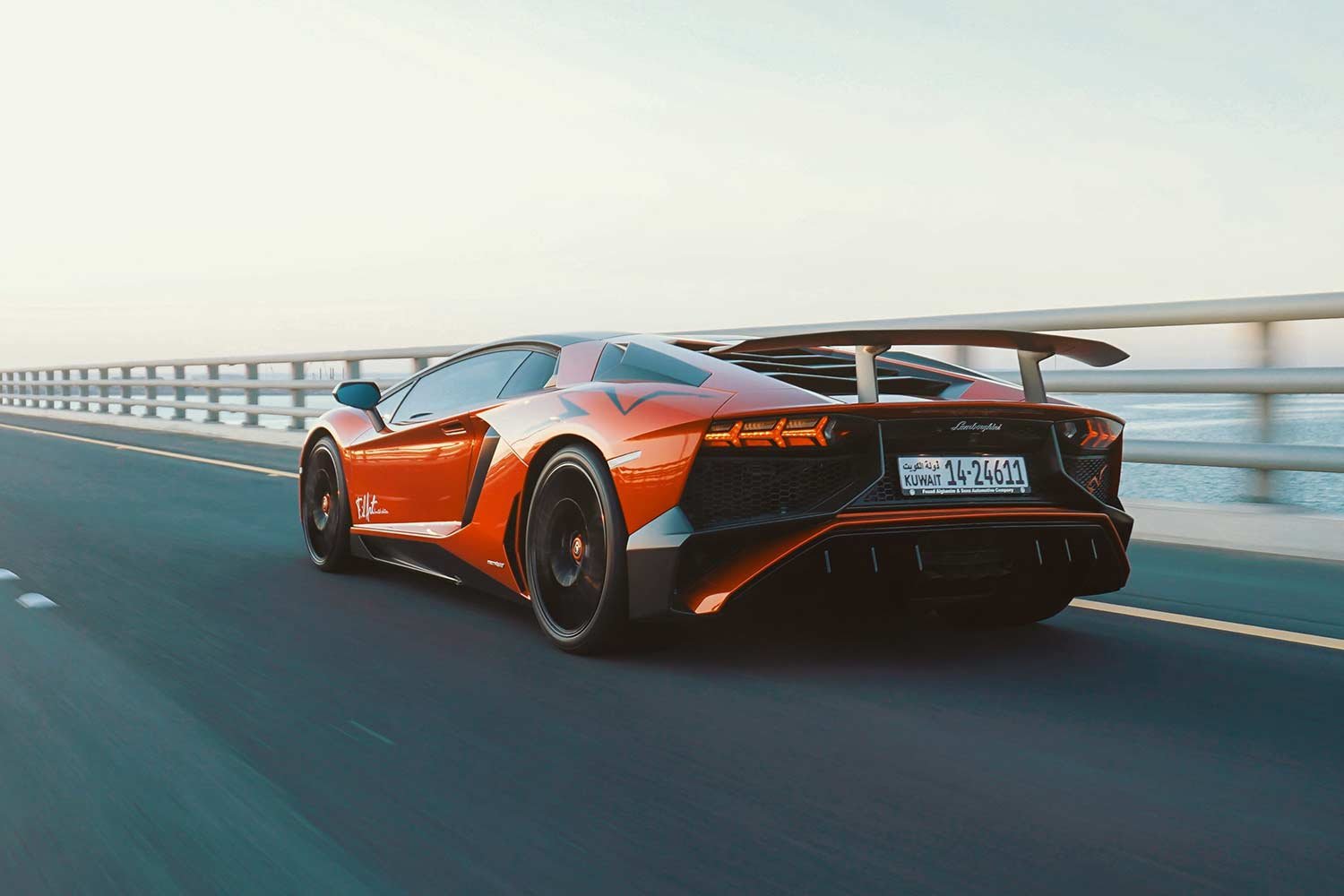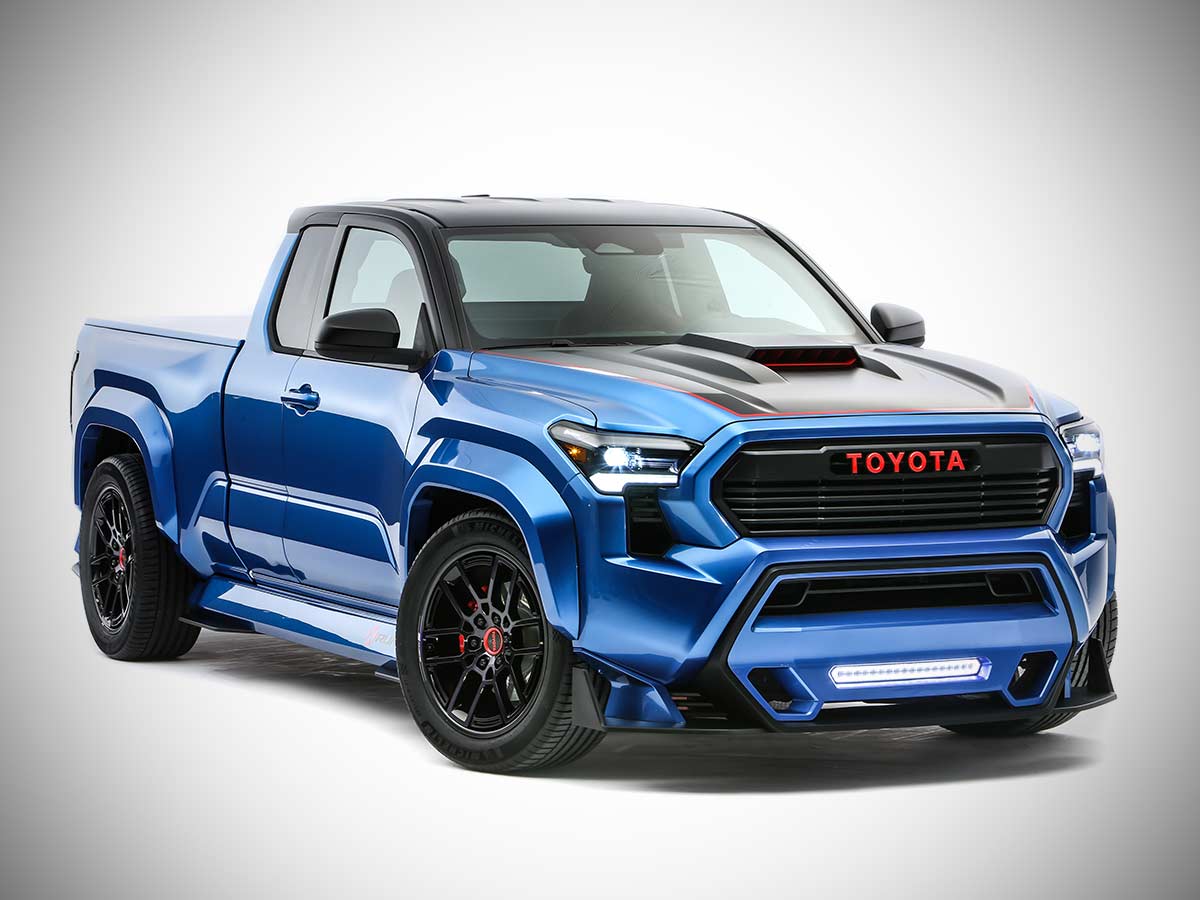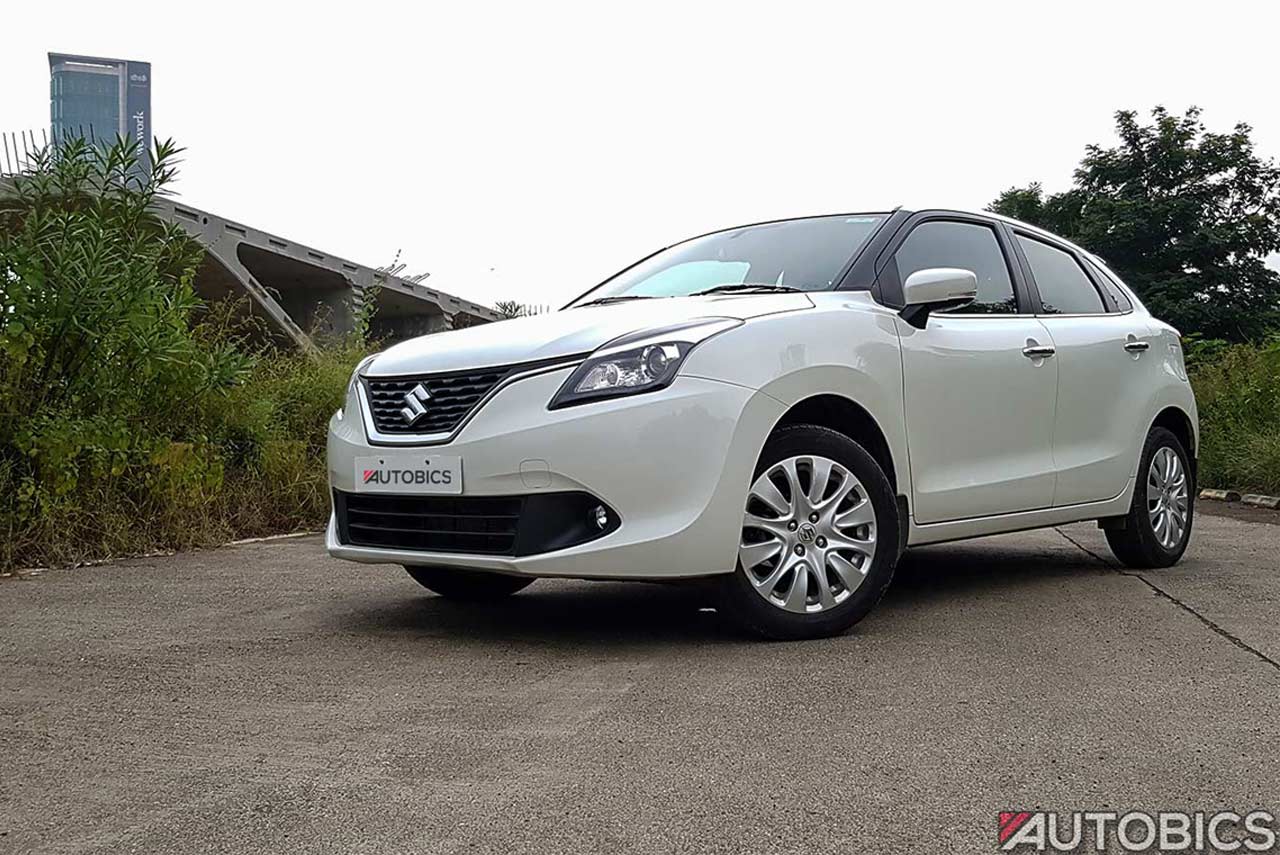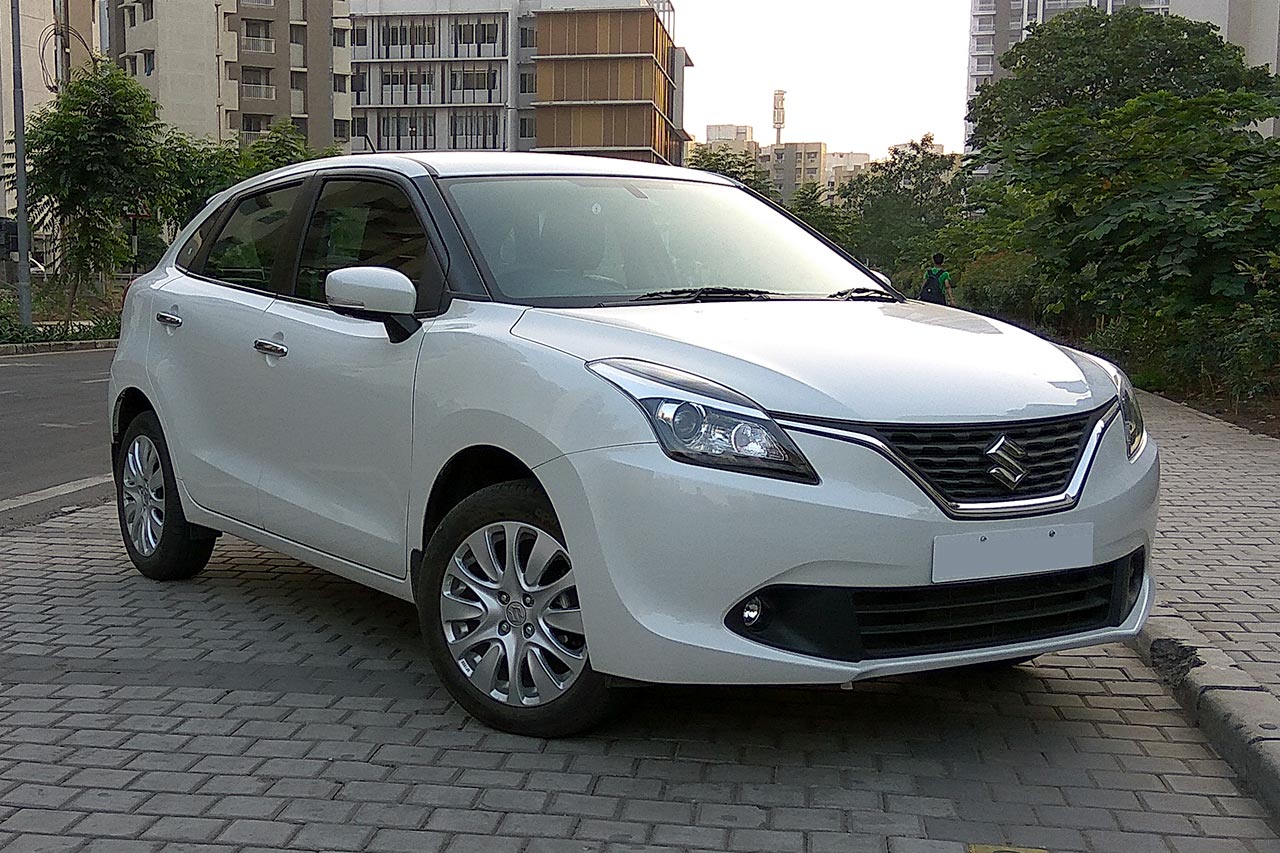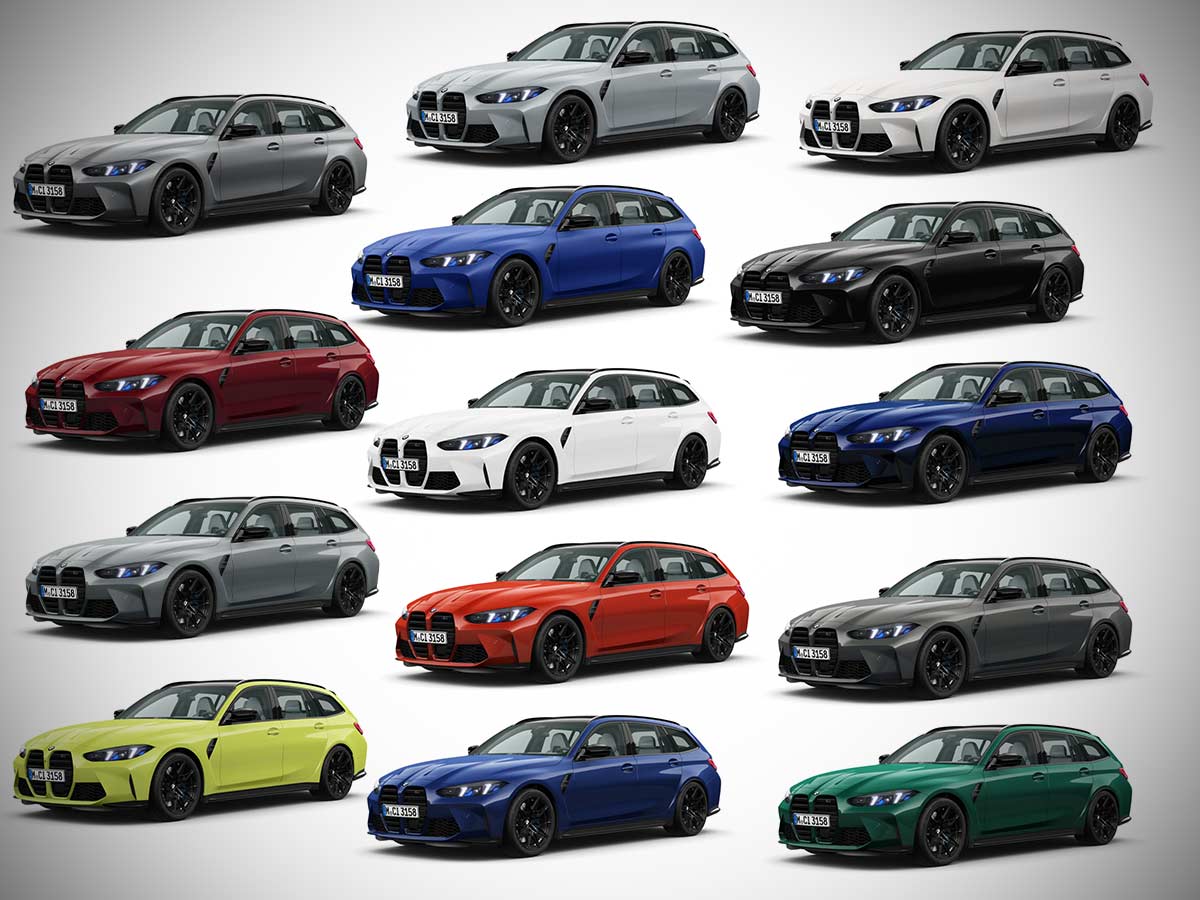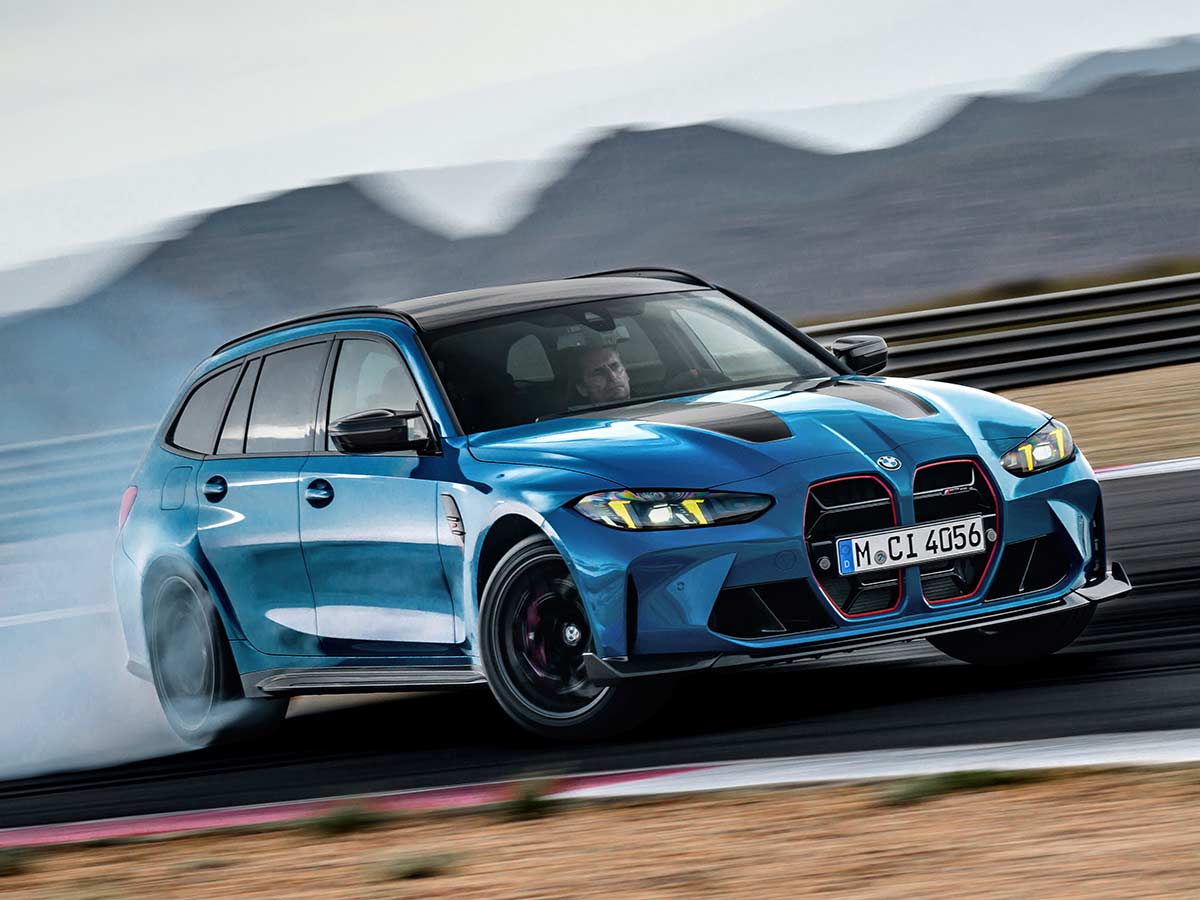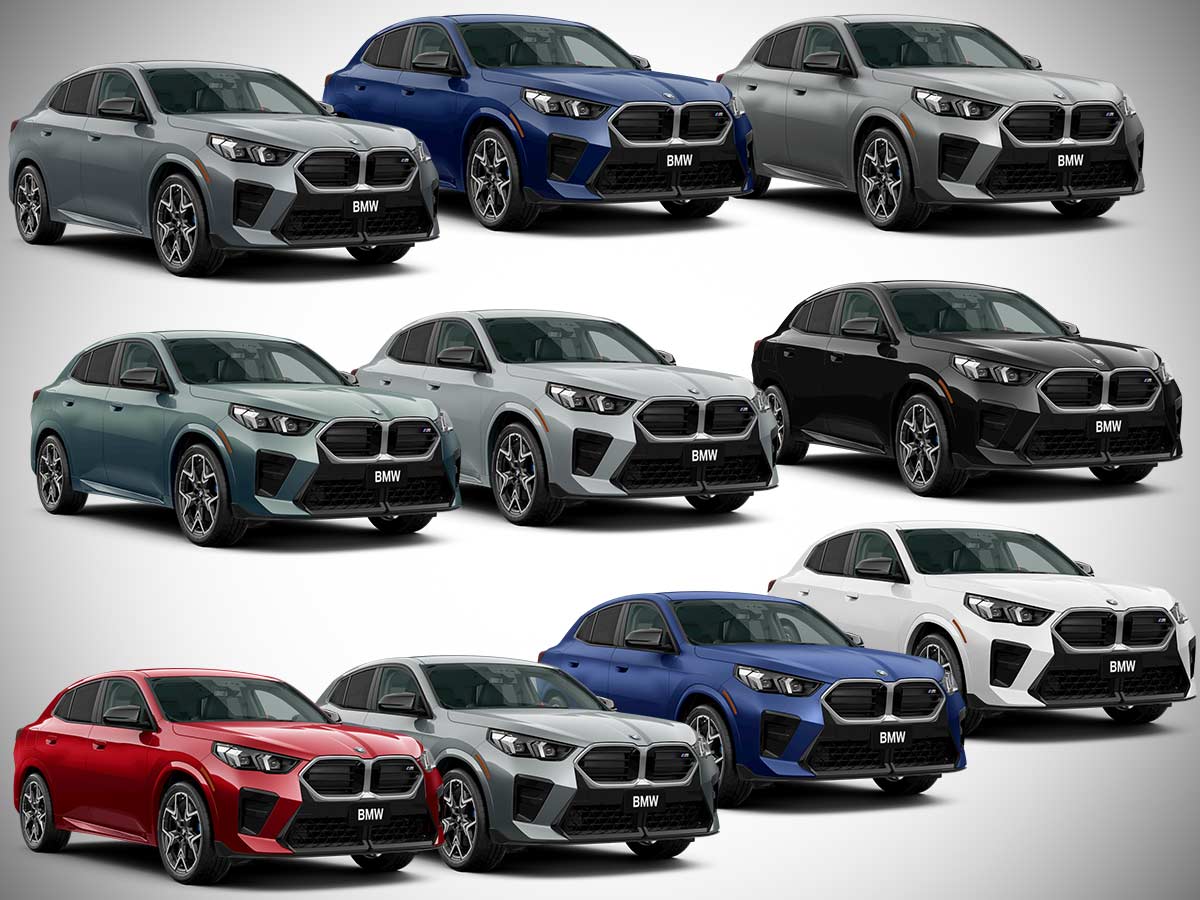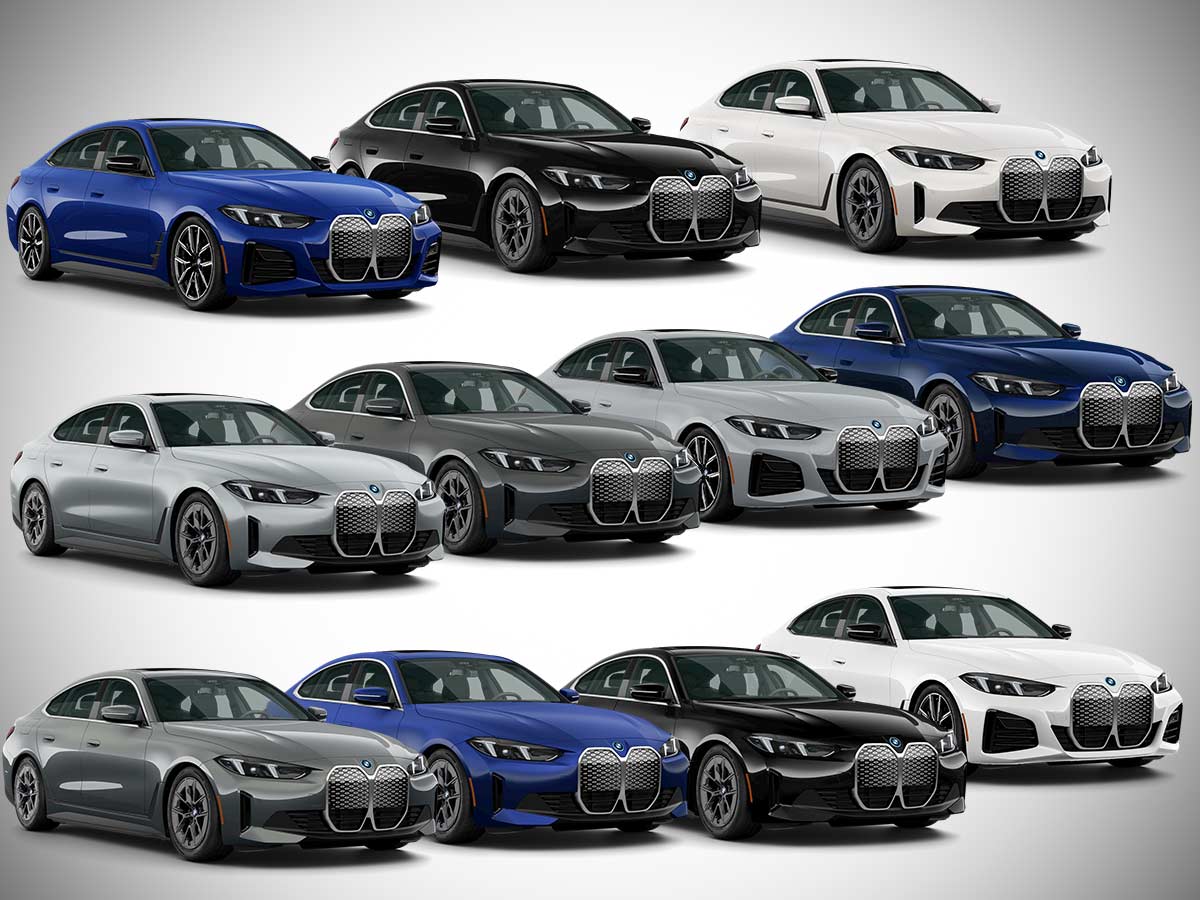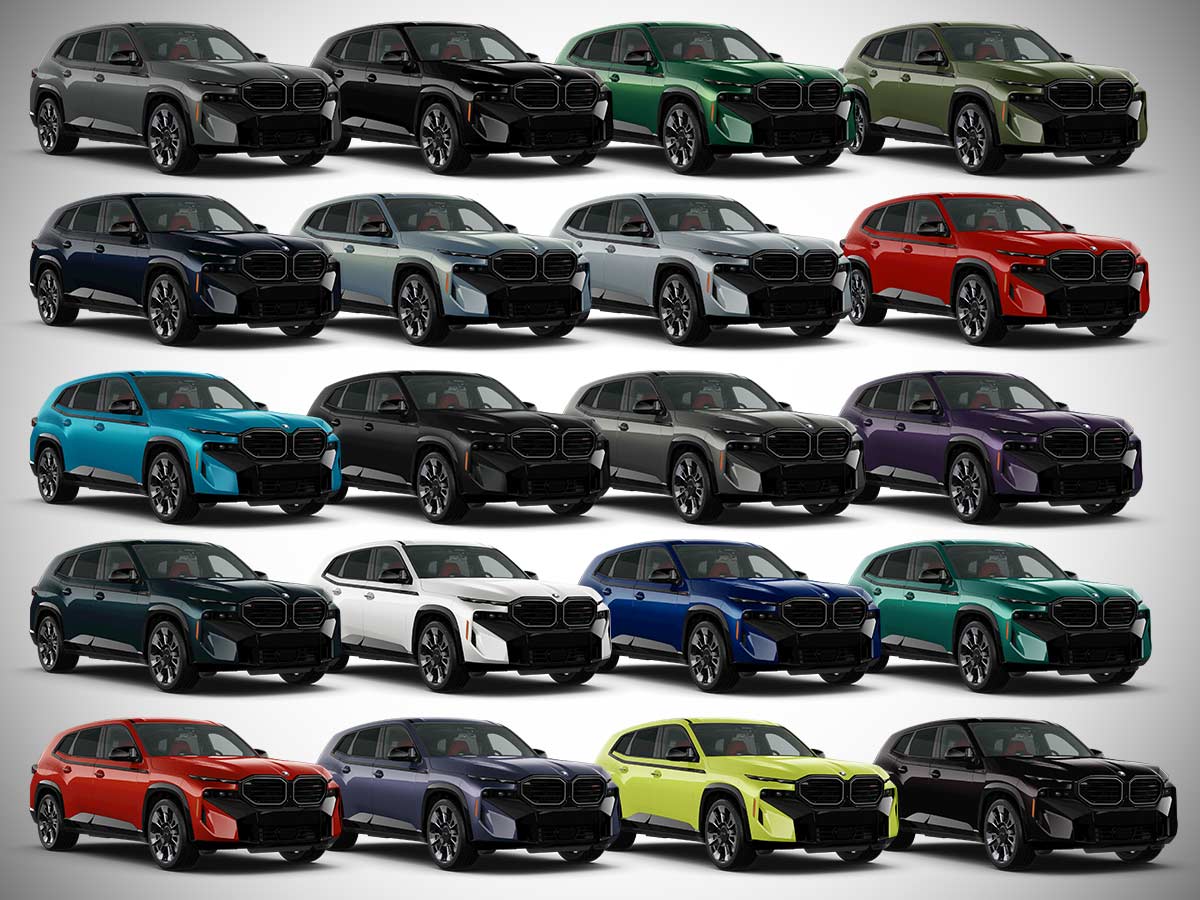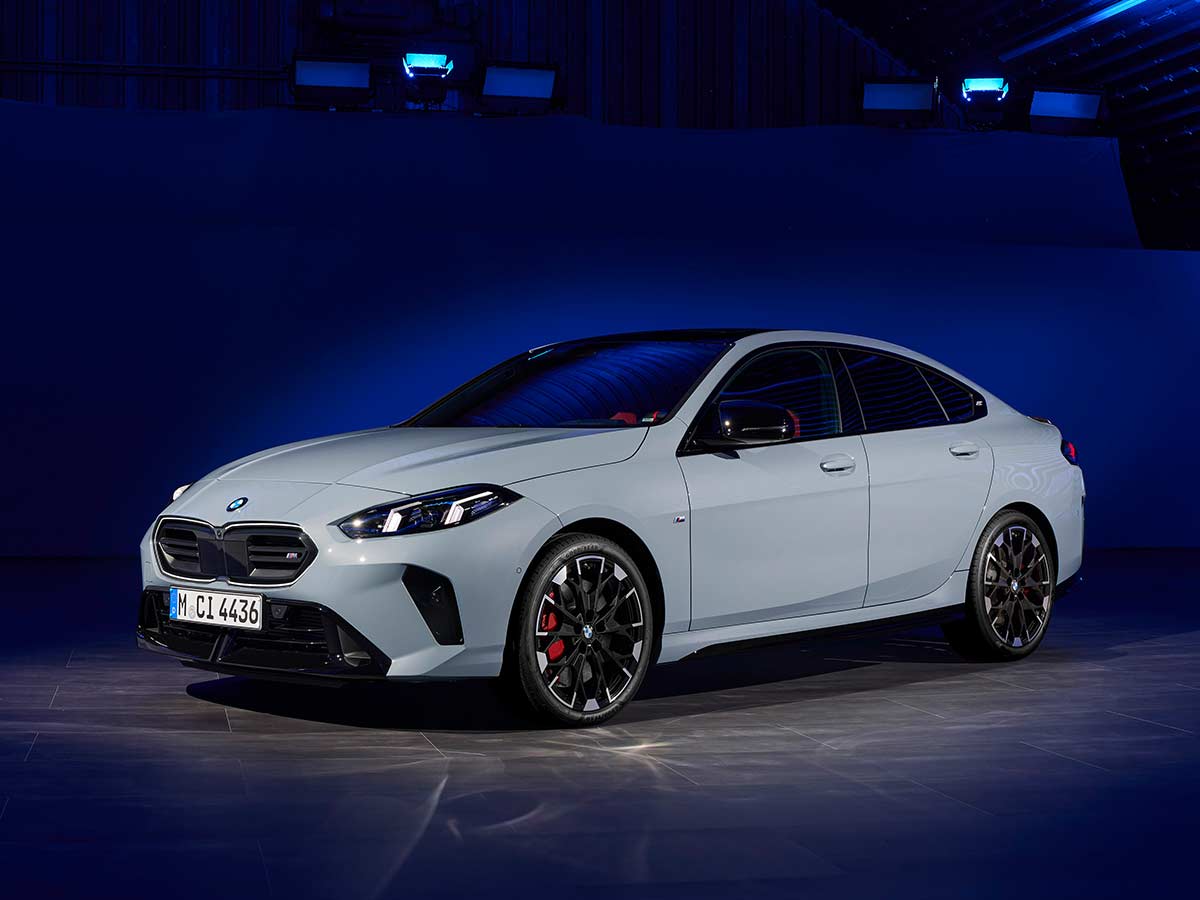More presence, more sportiness, more digitalisation: The new BMW X7 breaks new ground for richly assured driving pleasure in the luxury car segment. The first Sports Activity Vehicle (SAV) in this vehicle category offers an inimitable combination of exclusivity, dynamic excellence, luxuriant spaciousness and versatility. Indeed, the X7 has quickly developed into the most successful BMW model in the luxury class. And now its unique character profile has been honed to significant effect thanks to extensive design refinements – most notably a visually impactful front end – plus a new-look M Sport package, light-alloy wheels measuring up to 23 inches (a first for BMW) and the latest-generation iDrive control/operation system including BMW Curved Display and BMW Operating System 8. The new BMW X7 also comes with a further expanded range of standard equipment, additional driver assistance systems and the latest 48V mild hybrid technology for all engine variants.
The new BMW X7 is a central pillar in the ongoing product offensive at the most exclusive reaches of the premium carmaker’s model line-up. The new X7 will be produced at BMW Group Plant Spartanburg, the competence centre for BMW X models in the US state of South Carolina, where the BMW X6, BMW X5, BMW X4 and BMW X3 are also built. Alongside the USA and Canada, the most important sales regions for the luxurious SAV also include China and other Asian markets, Germany, the Middle East and Australia. The worldwide market launch for the new BMW X7 will get underway in August 2022.
Exclusive aura, imposing character
The largest of all BMW X models opens up new boundaries for enjoying an exclusive driving experience; its outstanding spaciousness and hallmark BMW driving dynamics can be sampled on surfaced roads and beyond. The versatility of the new X7 extends from its ability to cut a classically elegant figure on the road to a taste for action off the beaten track. Exterior dimensions underscoring the presence of the new BMW X7, generous levels of on-board space, equipment features of exceptional quality and a high-class cabin ambience for occupants in three rows of seats combine with powerful six- and eight-cylinder engines, state-of-the-art chassis technology and BMW xDrive intelligent all-wheel drive to create a case study in all-round poise and assurance.
With an exterior length of 5,162 millimetres, a width of 2,000 millimetres, a height of 1,819 millimetres and a wheelbase measuring 3,105 millimetres, the new BMW X7 is immediately identifiable as the largest SAV in the brand’s line-up. The newly interpreted exterior and interior design flags up the car’s standout status even more vividly. The new BMW X7 displays a strikingly updated front- and rear-end design as it adopts the new design language of BMW models for the luxury segment. The significantly upgraded standard equipment of the new X7 now also includes the Design Pure Excellence features. And the optional, newly designed M Sport package shines an even brighter spotlight on its dynamic driving properties. This aspect of the large SAV’s character can be accentuated more clearly still by specifying the M Sport package Pro.
A sumptuous feeling of space, innovative digital services
The new BMW X7 lays on generous levels of spaciousness for passengers in six or seven seats. The new design of the interior with BMW Curved Display, a new instrument panel including an ambient light bar in its lower section and new upholstery variants create an innovative and exclusive ambience. The latest generation of the control/operation system iDrive and new digital services underscore the modern and progressive mission statement of the new BMW X7.
Like the roominess and multi-use nature of the interior, high-quality materials and further expanded standard specification also help to generate an exclusive on-board ambience. Comfort seats now come as standard alongside the four-zone automatic climate control system, ambient lighting and panoramic glass sunroof. In European markets, the seats have BMW Individual Merino extended leather upholstery as standard. In a number of other markets, standard specification includes the new, extremely high-quality and leather-like vegan surface material Sensafin (not available in Europe), whose three-dimensional quilting and surface perforation further increase the comfort levels of the seats. The seats for the driver and front passenger are heated as standard. A nanoparticle filter improves the air quality inside the new BMW X7.
The functionality of the automated driving and parking systems available as standard or as options has been significantly expanded for the new BMW X7. This tech also helps reduce the danger of a collision when turning off.
Acoustic comfort and occupant protection at the highest level
The outstanding acoustic comfort offered by the new BMW X7 is another factor in creating the exclusive driving experience on board. Acoustic glass for the side windows comes as standard. And interior noise levels are further reduced by effective soundproofing for the engine compartment – including a second layer of insulation, an additional bulkhead, structural strengthening elements and acoustic shielding of cavities – the positioning of the rear ventilation unit under the third row of seats, and sound-absorbing wheel arch trim panels.
An integrated safety concept ensures optimal occupant protection in the new BMW X7. Supporting structures with a weight-optimised design but also a high load-bearing capacity combine with precisely engineered deformation paths to provide the ideal basis for preserving the passenger cell’s rigidity in various types of collision – and thereby for keeping the survival space for the occupants intact. All of the restraint systems are controlled by the central safety electronics.
Intelligent lightweight design, optimised aerodynamics, new mild hybrid technology, high proportion of recycled plastics
The body structure of the BMW X7 combines high strength with optimised weight. To this end, an intelligent mix of materials helps improve the body’s rigidity and crash safety. The hot-stamped steels used for the safety passenger cell are supplemented by multi-phase steels for extra reinforcement. The front end of the car uses an engine side member made from extruded aluminium profiles and die-cast aluminium spring struts. Added to which, the bonnet, the front side panels and the doors of the BMW X7 are also made from aluminium, which enhances both the driving dynamics and the efficiency of the SAV.
The design modifications have also brought about detail optimisations to the aerodynamic properties of the new BMW X7. The active air-flap control adjusts incoming airflow to the engine’s need for cooling. Both the lower air flaps and those positioned in the BMW kidney grille can be opened and closed through several stages. If the engine does not need much cooling and the flaps are therefore closed, the onrushing air can flow around the car and, in so doing, reduce aerodynamic drag by up to seven per cent. Air curtains in the outer sections of the front apron steer the air efficiently around the wheels. And air directing elements positioned on either side of the rear window team up with the roof spoiler to create a precisely defined airflow cut-off.
An all-encompassing focus on sustainability
The BMW Group has set out exacting sustainability targets in its corporate strategy which will be applied as part of an all-encompassing approach across the vehicle lifecycles. Among the areas covered by the sustainability measures put in place for the new BMW X7 are the selection of materials, production and the efficiency of the powertrain technology employed.
The procurement strategy in place focuses on meeting environmental and social standards, respecting human rights, protecting natural resources and reducing CO2 emissions. Power generated from renewable sources is used for vehicle production at BMW Group Plant Spartanburg. And BMW is increasing its use of secondary raw materials. For example, the air ducts for the braking system, radiator and rear heating in the new BMW X7 are manufactured from 50 per cent recycled plastic and the cable channels from 100 per cent recycled plastic. The luggage compartment trim panelling is likewise made from fully recycled plastic.
The SAV’s floor mats consist of a plastic thread known as Econyl, which is made from recycled nylon waste in a specially developed process. Among the base materials in Econyl are fishing nets salvaged from the sea, torn floor coverings and residual waste from the production of plastic. The CO2 emissions from manufacture of the recycled plastic are around 80 per cent below the levels posted in conventional production of petroleum-based nylon.
Added to which, the carbon footprint of the new BMW X7 has been reduced by the rigorously applied updates to its powertrain technology. The new combustion engines stand out with their further enhanced efficiency. Plus, for the first time all of the engines available for the BMW X7 are equipped with 48V mild hybrid technology. The latest generation of this system, featuring an electric motor integrated into the transmission, improves both the efficiency and response of the combustion engine more significantly than ever before.
Exterior design
The typical proportions of a Sports Activity Vehicle (SAV), a spacious interior allowing a range of possible uses, and multi-faceted, agile driving properties showcase the extravagant character of the new BMW X7 in consummate style. Extensive design modifications accentuate the exclusivity and presence of the largest BMW X model even more vividly. The changes centre on the new design of the front and rear ends, which underscores more clearly than ever the status of the new BMW X7 as one of the brand’s flagship models. With the all-new interpretation of its headlight unit design, it joins the new BMW i7 and BMW Concept XM in presenting the future face of BMW’s luxury segment models.
The modern, visually striking front end of the new BMW X7 clearly signals its progressive and exclusive style. Light-alloy wheels with a 23-inch diameter – available as a factory-fit option here for the first time on a BMW model – emphasise the car’s powerful stature in dramatic style. Added to which, an array of high-quality details point to the exclusive status of the new X7. These include the three-dimensional rear lights, the newly designed bars in the illuminated BMW kidney grille and the eye-catching blades in the front apron with their aluminium satinated finish.
Modern front end design adopts the new style of BMW’s flagship models
Its extensively reworked front end ensures the new BMW X7 makes a potent visual impact and sets it apart clearly from the other BMW X models. The new structure and design of the front end pick up on signature BMW design cues such as the twin headlights. In their newly interpreted form, the headlights emphasise the car’s upright stance and reinforce its road presence.
This is the first time that split headlight units have been employed to provide the daytime driving lights on the one hand and to illuminate the road ahead on the other. They divide the tasks of flagging up the car’s presence and providing clear visibility between two separate modules that are mounted one above the other. The horizontal light elements set higher up in the front end are responsible for the signalling functions. Here, the two LED units on either side of the front end appear to shine directly out of the narrow glass covers when creating the daytime driving light. With their crisp contours depicting a form similar to an upturned L, they project a classy and technically sophisticated appearance and further increase the car’s presence. The daytime driving lights also adopt the function of turn signal indicators. Here, light signals pulsating in rapid succession with weaker and stronger intensity display the indicator and hazard warning light functions in an eye-catching, heartrate monitor-style (not available in the US market).
The low-beam and high-beam headlights are generated by two other LED units in separate modules below the daytime driving lights. Their dark housing and deeply embedded position in the front apron give these modules the impression of retreating into the background and only coming to the fore when activated. The updated version of the adaptive matrix LED headlights – which also include the Adaptive Headlights and cornering light functions, as well as BMW Selective Beam non-dazzling high beam – are part of standard specification for the new BMW X7. Plus, adaptive light distribution with automatic bad weather light now also provides the functionality of front fog lights.
Newly designed BMW kidney grille with cascade lighting
The updated front-end design also showcases BMW’s signature kidney grille to prominent effect. The intricately presented new grille bars – with their bi-colour look and chrome elements – add a flourish of exclusivity within the grille’s eye-catching surround.
The “Iconic Glow” BMW kidney grille (standard on the BMW X7 M60i xDrive) presents customers with an option offered by no other rival. Its understated cascade lighting for the two grille elements brings a richly extravagant feeling to the front end of the new BMW X7, both when stationary and on the move. The illumination is activated when one of the doors is opened and can be switched on or off manually by the driver via the iDrive menu.
Working in tandem with the new design of the headlights and kidney grille, the front apron as a whole displays a thoroughly updated look. Its generously sized surfaces, the precisely integrated air curtains and its finish in body colour underscore the exclusive appearance of the new BMW X7. Another distinctive feature are the large inlays in aluminium satinated which border the lower air intake on either side. With their outward-facing contour, they accentuate the powerful stance of the new BMW X7 on the road.
Side view with expansive surfaces and dynamically flowing roofline
When viewed from the side, large window surfaces and the long, dynamically flowing roofline steer the eye to the spacious, light-filled interior of the new BMW X7. The rear doors are longer than the front doors and make it easy for passengers in the second and third rows of seats to climb in and out. Clearly sculpted surfaces and the striking character line rising up to the rear are expressions of the new BMW design language.
Standard specification brings roof rails with an aluminium satinated finish for the BMW X7 xDrive40i and BMW X7 xDrive40d models or in High-gloss Black for the BMW X7 M60i xDrive and cars with the M Sport package. In addition, chrome trim strips in the side skirts – which extend all the way to the air breathers and are reprised in the rear apron – and the rounded contours of the all-body-colour wheel arches underline the elegance and exclusivity of the new BMW X7. The aluminium side sill trim panels available as an option for the new BMW X7 xDrive40i and new BMW X7 xDrive40d are sure to turn heads. With the xOffroad package also specified, they help the new BMW X7 to cut a convincing all-terrain figure.
Detailed refinements for the rear end, including three-dimensional lights
Light units now with three-dimensional sculpting add a striking accent to the rear of the new BMW X7. Their LED light sources form a single unit with the glass covers, accentuating the sophisticated technology of the lights. The L-shaped rear light strips generate significantly greater intensity, enabling them to double up as brake lights. The light units can therefore be kept extremely slim. The turn indicators are housed in their upper sections, and these also generate visually effective pulsating light signals (not available in the USA). The sections of the rear lights extending into the flanks of the car display a graphic and BMW lettering. The fine chrome bar connecting the two light units on the new BMW X7 is enclosed within an exquisite glass cover.
The powerful, towering presence of the rear end is imbued with extra structure by horizontal lines. Vertical aero lips on the sides of the rear end emphasise its width. Both the exhaust system’s trapezoidal tailpipe finishers and the underride protection between them are finished in Glacier Silver as an expression of elegance.
Premiere for 23-inch light-alloy wheels; new exterior colours
The new X7 sees 23-inch light-alloy wheels made available as a factory-fit option for a BMW model for the first time. The items in question are aerodynamically optimised BMW Individual bi-colour light-alloy wheels with diamond polished surfaces, which combine with contrasting Midnight Grey to create an elegantly sporty V-spoke design. The new BMW X7 comes as standard with 20-inch light-alloy wheels. Customers can find a selection of 21- and 22-inch light-alloy wheels on the options list.
A total of 14 exterior colour shades will be available for the new BMW X7 from launch, including the new Sparkling Copper Grey metallic variant. This cool grey tone, which emphasises the clear forms and elegant aura of the new BMW X7, is complemented by copper particles which generate vivid and contrast-rich light effects when the light hits the car’s body. The range of exterior colours also contains the M Marina Bay Blue metallic shade available exclusively for the BMW X7 M60i xDrive and the BMW Individual finishes Ametrine metallic, Dravite Grey metallic, Tanzanite Blue metallic and Frozen Pure Grey metallic.
In addition to this, around 40 BMW Individual colours are available for the new BMW X7 on special request. These include metallic shades such as Daytona Violet and Ruby Red, plus non-metallic or matt finishes. These exclusive paint finishes are applied by hand in a meticulous process. The spectrum of colours is being expanded all the time.
Interior and equipment
The high levels of driving pleasure and long-distance comfort offered by the new BMW X7 are complemented by a modern digital ambience on board and an innovative cockpit design. The integration of BMW Operating System 8 and the latest generation of the iDrive control/operation system also heralds the arrival of the BMW Curved Display in the large Sports Activity Vehicle. Other control elements can be found on the centre console with the newly designed gear selector and Driving Experience Control buttons.
The generous spaciousness of the new BMW X7 can be enjoyed across three rows of seats. The second row of seats accommodates three passengers as standard or two in individual seats as an option. New seat surfaces and bold colour combinations add to the interior’s contemporary feel. The further expanded range of standard equipment goes to new lengths in enhancing the comfort of those on board and maximising their wellbeing. As well as the Sport leather steering wheel with gearshift paddles, four-zone automatic climate control, ambient lighting, panoramic glass sunroof and hi-fi system, it now also includes heated comfort seats for the driver and front passenger, a tray for wirelessly charging compatible mobile phones and Comfort Access.
Fully digital BMW Curved Display with intuitive touch control
The progressive design of the cockpit in the new BMW X7 has brought about a significant reduction in the number of buttons and controls in favour of digital control for numerous functions. The integration of the BMW Curved Display has been a driving force in the adoption of this modern, digital direction of travel. The BMW Curved Display is made up of a 12.3-inch information display behind the steering wheel and a control display with a 14.9-inch screen diagonal. The two screens merge into one fully digital and high-resolution display unit behind a single glass surface curving towards the driver. The BMW Curved Display is angled ergonomically towards the driver, making the intuitive touch control even more straightforward. However, the front passenger can also view the screen content and operate the system using touch control, voice control or with the optional BMW gesture control. The high-quality display technology using anti-reflective glass also makes it possible to dispense with the customary binnacle for shielding the readouts from sunlight, giving the cockpit area a remarkably uncluttered and airy appearance.
The automatic climate control system can also be operated via the BMW Curved Display using touch control. It is shown on the screen at all times and allows a different temperature to be set for the driver’s side and front passenger side. Activating the climate control menu then also allows the user to control the quantity and distribution of air, as well as the seat heating function. A separate control unit is provided for passengers in the second row of seats. The optional five-zone automatic climate control system enables the passengers in the third row to adjust temperature and airflow via a control panel in the roof. Meanwhile, a standard-fitted nanoparticle filter removes virus-sized particles and allergens from the air inside the cabin.
Slim instrument panel with innovative ambient light bar
The integration of the BMW Curved Display is part of an all-new design for the instrument panel. It has an extremely slim form in the new BMW X7, its horizontal structure emphasising the width of the interior and exuding cutting-edge elegance. In the central area of the instrument panel, the broad, smoothly curving trim element in standard fine wood provides the perfect stage for the BMW Curved Display.
Another new feature in the new BMW X7 is the ambient light bar, which makes its debut here below the interior trim strip in the front passenger area. Its crystalline surface structure and effective backlighting – with the help of LED units and a graphic including “X7” lettering (or the M logo in the new BMW X7 M60i xDrive) – enhance the aura of exclusivity inside the cabin.
The innovative light bar is a striking addition to the likewise standard ambient lighting, which employs precise LED contour lighting for the instrument panel, the centre console and the door panelling to underscore the generous feeling of space on board. The light distribution, brightness and colour for the interior illumination can be configured via the iDrive menu. In its latest incarnation, the ambient lighting invites the user to choose from a selection of 15 colours.
The ambient light bar is therefore an integral element of the light effects activated in various different situations. In the Welcome Scenario, the driver is greeted by effective brightening of the interior illumination as they approach the car. When the driver gets out of the car and locks it, the ambient lighting dims in a flowing movement from back to front, with the light bar’s illumination concluding the sequence by retracting dynamically towards the front passenger side of the car. The light bar signals an incoming telephone call with a dynamic chaser light, while the contour lighting in the first row of seats pulses in tandem. The ambient lighting system’s range of functions also includes the Welcome Light Carpet – which projects an eye-catching image onto the ground when the doors are unlocked or opened, illuminating the area just outside the doors – and pulsating light signals that appear on the inner panelling of an open door when the engine is running.
The air vents in the instrument panel have been totally redesigned. The central outlets are extremely slim and have been integrated into the cockpit with almost no visible trace. The outer vents have High-gloss Black slats and are bordered by exquisite chrome surrounds. A single, directly positioned control knob enables precise adjustment of both the quantity of air sent out by all of the vents and the direction in which the vents are pointing.
Control panel in the centre console with new selector lever
A sophisticated-looking control panel on the centre console houses the iDrive Controller, the Start/Stop button and the buttons activating the electric parking brake, air suspension settings and optional off-road modes. Also found here are the Driving Experience Control buttons and the newly designed gear selector lever.
Exclusive glass applications for selected controls can be specified as an option. This both visually and haptically appealing design enhancement adorns the selector lever, the Start/Stop button and the iDrive Controller.
Now standard: heated comfort seats for the driver and front passenger
The new BMW X7 provides heated comfort seats for the driver and front passenger as standard. These offer fully electric adjustment of the seat position and head restraint height (including memory function), plus lumbar support. Active seat ventilation and a massage function for the driver and front passenger can be added as an option.
Standard specification for European markets includes BMW Individual Merino extended leather upholstery in a choice of Black, Ivory White, Tartufo or Coffee. In other markets, the new, extremely high-quality and vegan surface material Sensafin comes as standard (not available in Europe). Sensafin has leather-like properties, exclusive three-dimensional quilting and surface perforation to enhance seating comfort.
It is available in Black, Silverstone, Cognac and Coffee. The optional BMW Individual full Merino leather upholstery can be ordered in Black, Ivory White, Tartufo and now for the first time also the bi-colour variant Ivory White/Atlas Grey. This two-tone option shows off the exclusive geometry of the interior surfaces particularly effectively.
Generous levels of space for passengers and ample room for luggage: Choice of seven or six seats; up to 2,120 litres of load capacity
The new BMW X7 can be ordered as an option with six seats rather than the standard seven. In six-seat configuration, the two individual seats in the second row are comfort seats with integral armrests and comfort cushions. In both the standard and optional arrangements, the second-row seats can slide back and forward, through up to 14.5 centimetres in the seven-seater. All of the seat settings are electrically operated, including folding down the backrests in the second and third rows and returning them to the upright position. Control panels for adjusting the seats as desired can be found on the driver’s side as you enter through the rear doors and in the luggage compartment. The control panel integrated into the driver’s door also enables the fore/aft position of the front passenger seat and the seats in the second row to be adjusted.
With all the seats in place, the BMW X7 has 326 litres of load capacity. With the backrests of the second- and third-row seats folded down, this expands to a maximum 2,120 litres. To make loading easier, the car’s standard air suspension allows it to be lowered at the touch of a button in the boot. Added to which, the new BMW X7 has a split tailgate, with the two sections opened and closed electrically as standard. The standard Comfort Access enables automated, hands-free opening and closing of the two tailgate sections.
Three-section panoramic glass sunroof comes as standard, Comfort Package optional
The new BMW X7 is fitted as standard with a panoramic glass sunroof which further enhances the spacious and light-filled ambience of the interior. In addition to its smoothly opening front element and central section, the panoramic roof also features an additional section to the rear. As a result, passengers in the third row can also enjoy the feeling of space enhanced by the light flooding into the interior. All of the glass roof elements have an electrically sliding headliner.
The Sky Lounge panoramic glass sunroof, meanwhile, generates a very special and exclusive aura when darkness falls, with LED light spreading evenly across the glass surfaces to illuminate more than 15,000 graphic patterns and generate a display reminiscent of a starlit sky. The colour scheme for this atmospheric light show is based on the customer’s choice of ambient lighting setting.
The newly composed Comfort Package further increases the feeling of wellbeing in all seats. For example, like the front seats, the seats in the second and third rows can also be heated. Plus, the steering wheel and the armrests for the driver and front passenger in the doors and centre console are all heated too. The “thermo” function for the cup holders arranged foremost in the centre console keeps drinks containers cool or warm as required.
Powerful sound, tailored to individual requirements: entertainment in the new BMW X7
With its ten speakers, the standard-fitted hi-fi speaker system already treats the driver and passengers inside the new BMW X7 to impressive audio richness. However, the optional Harman Kardon surround sound system with 16 speakers (standard in the BMW X7 M60i xDrive) provides an even more intense musical feast for the ears. And the optional Bowers & Wilkins Diamond Surround Sound System with 20 speakers and 1,500-watt amplifier lays on a particularly sumptuous listening experience. A digital seven-channel amplifier and additional sound sources in the roof area generate an absorbingly clear and multi-layered 3D sound experience for people in all seats.
A newly designed Travel & Comfort System available as an option allows a personalised entertainment programme to be set up in the rear of the new BMW X7. It provides one USB-A and two USB-C ports in the first row of seats, four USB-C ports in the second row and two USB-C ports in the third row. The USB ports in the front seat backrests provide 45 watts of charging power for topping up personal devices. Passengers in the second row can use the quick connectors fitted to the driver’s and front passenger seat backrests to attach multifunction holders from the Original BMW Accessories range. These allow tablets and other personal devices to be fixed easily and securely to the seat backrests, where they can provide the screens for the passengers’ choice of entertainment.
BMW M model, M Sport package and M Sport package Pro
Sporting performance ranks among the core qualities of the new BMW X7, alongside its sumptuous long-distance comfort and consummate versatility. A new version of the M Sport package is available for the BMW X7 xDrive40i and BMW X7 xDrive40d models. This presents a dynamic contrast to the clean-cut, refined elegance of the SAV, which comes in Design Pure Excellence specification as standard. Comprising distinctive design features on the outside and a specially styled interior, it creates a sporty appearance while delivering an intense driving experience.
The range-topping BMW X7 M60i xDrive places particular emphasis on dynamic driving pleasure. The BMW M model also clearly accentuates its sporty prowess with a series of model-specific design and equipment features both inside and out. A new M Sport package Pro is additionally offered as an upgrade to the M Sport package for the six-cylinder models as well as for the V8 flagship model.
New M Sport package provides dynamic looks
Aerodynamically optimised exterior features and numerous design elements in a High-gloss Black finish set the tone for the appearance of the BMW X7 xDrive40i and BMW X7 xDrive40d with optional M Sport package. The front and rear aprons boast an M-specific design, as do the side skirts. Features of the front apron include a particularly large lower air intake and High-gloss Black trim on the outer edges of the air curtains. The roof rails, side window surrounds, air breathers and the adjoining trim strips along the door sills and at the rear also sport a High-gloss Black finish. M logos on the front flanks and 21-inch M light-alloy wheels in twin-spoke design with a bi-colour finish add further to the dynamic aura. An inlay in Dark Shadow and trapezoidal exhaust tailpipe finishers are the defining elements of the rear end’s sporty look.
The list of M-specific features for the interior includes illuminated door sill plates bearing the M logo, an M leather steering wheel, fine wood interior trim strips in Fineline Stripe High-gloss Brown, an Anthracite-coloured M headliner, stainless-steel M pedals, an M driver’s footrest and model-specific floor mats. An M logo in the instrument cluster display and an M-specific vehicle key also form part of the M Sport package’s specification.
BMW M model with high-impact visuals
M-specific exterior features including large air intakes and aerodynamically optimised details also help to endow the new BMW X7 M60i xDrive with an extremely striking appearance. Exclusive design elements are further pointers to the range-topper’s standout performance. An M logo on a black background adorns the standard illuminated BMW kidney grille, featuring matt Black bars with high-gloss faces. And aerodynamically optimised M exterior mirrors are joined by a model-specific trim element bearing the M logo next to the air breathers on the car’s flanks.
21-inch M light-alloy wheels in twin-spoke design with a bi-colour finish are likewise fitted as standard on the new BMW X7 M60i xDrive. Moving to the rear, the standout feature is the exhaust system’s twin tailpipe finishers on the left and right.
Inside, the specification of the M Sport package is supplemented by illuminated door sill plates with “M60i” lettering, an M leather steering wheel with stitching in the BMW M GmbH colours, interior trim strips in Fineline fine wood with High-gloss metal effect, an M-specific ambient lighting bar and an M headliner in Anthracite-coloured Alcantara. This imbues the new BMW X7 M60i xDrive with a cabin ambience majoring in focused driving pleasure.
M multifunction seats with additional electrically adjustable settings, interior trim strips in Carbon Fibre and M Carbon exterior mirror caps are available as options, both for the new BMW X7 M60i xDrive and in conjunction with the M Sport package.
New: M Sport package Pro and “BMW M 50 Years” emblems
The M Sport package Pro offered for the first time for the new BMW X7 highlights the sporty streak in its character even more emphatically. Available as an optional upgrade for the M Sport package and for the BMW X7 M60i xDrive, it comprises extended M Shadow Line trim (that also adds a matt Black surround for the kidney grille and tailpipe finishers in Black Chrome), plus M Sport brakes with black brake callipers bearing the M logo and seat belts with contrast stitching in the BMW M GmbH colours (standard in the BMW X7 M60i xDrive). When specified with the M Sport package Pro, the six-cylinder models are also fitted with an M Sport exhaust system. In the new BMW X7 xDrive40d, its exhilarating soundtrack is channelled into the interior with great authenticity.
Another particularly striking detail can be added to the special design features of the M Sport package and the BMW X7 M60i xDrive in BMW M GmbH’s anniversary year. The optional “BMW M 50 Years” emblems for the bonnet, tailgate and hubcaps are reminiscent of the classic emblems on the early racing cars created by the BMW subsidiary, which was founded in 1972.
Engines, transmissions and BMW xDrive
The new BMW X7 will line up with a choice of three state-of-the-art and extremely powerful engines from the new modular generation of the BMW Group Efficient Dynamics engine family. The range is headed by a new 4.4-litre petrol V8 for the range-topping BMW X7 M60i xDrive, which is derived from the engines powering the high-performance cars coming out of BMW M GmbH. Joining it are two six-cylinder in-line units (each with 3.0-litre displacement) – a second new petrol engine for the new BMW X7 xDrive40i and an extensively updated diesel fitted in the new BMW X7 xDrive40d.
Meanwhile, the intelligent all-wheel-drive system BMW xDrive maximises traction, agility and directional stability on any surface. The rear-biased approach preferred for its fully variable power distribution underscores the sporty driving attributes of the new BMW X7.
New 48V mild hybrid technology for all engines
Electrification in the form of 48V mild hybrid technology gives all the engines available for the new BMW X7 even more majestic power development and increased efficiency. Playing a key role here is the world premiere of the eight-speed Steptronic Sport transmission, which is included in all variants of the new X7 as standard and is unique in this segment.
Installed in the transmission’s compact housing as part of a 48V mild hybrid system is an electric motor that helps the combustion engine to deliver a smooth, dynamic and, at the same time, efficient drive. The mild hybrid system generates torque of 200 Nm (147 lb-ft) and an output boost of up to 9kW/12 hp, depending on the driving situation.
In the new BMW X7 xDrive40i, the mild hybrid system is also used to provide purely electric driving at very low speeds. As a result, it comes with an acoustic pedestrian protection system.
The energy required for providing the electric power boost is stored in a 48V battery located in the engine compartment. It is charged via recuperation in overrun and braking phases. Besides supplying the electric motor, the 48V battery also feeds the regenerated brake energy to the vehicle’s electrical system.
V8 engine with M TwinPower Turbo technology and optimised efficiency in the BMW X7 M60i xDrive
In the new BMW X7 M60i xDrive, the 48V mild hybrid system links up with the newly developed 4.4-litre V8 petrol engine with M TwinPower Turbo technology. The new V8 can trace its genes back to engines used in renowned BMW M and racing machines and utilises the thermodynamic benefits of a cross-bank exhaust manifold, bank-symmetrical turbochargers and external engine oil cooling. In addition, a reinforced crankshaft drive, further developed turbocharging with a blow-off valve, a new oil pump and a weight-minimised oil sump all play their part in increasing the engine’s efficiency.
The combination of the engine and the electric motor integrated into the eight-speed Steptronic Sport transmission hands customers the twin benefits of optimised response and power delivery under acceleration and increased efficiency thanks to adaptive recuperation at up to 0.13 g. The controlled intervention of the electric motor also noticeably increases comfort levels when the Auto Start Stop function cuts in and in idling and coasting situations. The coasting function with deactivated combustion engine comes into play when the Driving Experience Control mode ECO PRO is selected.
With its output of 390 kW/530 hp and peak torque of 750 Nm (553 lb-ft), the eight-cylinder engine propels the BMW M car from 0 to 100 km/h (62 mph) in 4.7 seconds. Here, the vivacious power development of the V8 engine is accompanied by the emotionally rich soundtrack from the standard-fitted sports exhaust system. The combined fuel consumption and CO2 emissions figures for the BMW X7 M60i xDrive are 13.3 – 12.2 litres per 100 kilometres (21.2 – 23.2 mpg imp) and 303 – 278 grams per kilometre in the WLTP cycle (figures in the NEDC cycle: -).
Premiere for the new six-cylinder in-line petrol engine in the BMW X7 xDrive 40i
With an all-new package of technology on board, the six-cylinder in-line petrol engine from the new modular generation of units achieves a typically BMW two-pronged leap forward – upping the power and lowering its emissions. Making its debut in the new BMW X7 xDrive40i, the engine boasts a wealth of innovations when it comes to the combustion process, gas exchange, valve control, injection and ignition system involved. Its maximum output of 280 kW/380 hp is up by 35 kW/47 hp compared to its predecessor’s figure, while peak torque rises by 70 Nm (52 lb-ft) to 520 Nm (383 lb-ft) – and can be boosted to as much 540 Nm (398 lb-ft) with the input of the mild hybrid system.
The Miller cycle shortens the opening time of the intake valves, which subsequently leads to an increase in the effectiveness of the turbocharging system and the intercooler. This reduces fuel consumption and emission levels significantly across the entire load range and thus in day-to-day driving. The effect is further enhanced by redesigning the intake port and combustion chamber to optimise both mixture formation and combustion efficiency. Using an active coil with integrated electronics also allows the ignition system to be adapted to the new combustion process.
The VALVETRONIC fully variable valve control now includes a switchable rocker arm on the exhaust side, which allows gas exchange to be interrupted, if required. In this way, the engine’s frictional torque on the overrun can be reduced by around two thirds. So when the driver releases the accelerator, a higher proportion of the braking energy can be absorbed by the mild hybrid system’s generator and fed into the 48V battery by means of recuperation.
The VANOS variable camshaft timing now works electrically. This means the adjustment range can be expanded to minimise emissions even further. The mixture preparation is optimised using a new dual injection system. In addition to the existing high-pressure injection system, some of the fuel is now injected into the combustion chambers via a low-pressure system. The resultant flow behaviour inside the inlets and the cylinders results in reduced particulate formation and lower CO2 emission levels. And the injection technology gives the engines a more pleasant sound at idle, too. Power development and emissions also benefit from a new exhaust manifold integrated into the cylinder head.
The new engine accelerates the BMW X7 xDrive40i from 0 to 100 km/h (62 mph) in 5.8 seconds – which is 0.5 seconds faster than the predecessor model managed. This spirited power development comes together with combined fuel consumption of 10.5 – 9.2 litres per 100 kilometres (26.9 – 30.7 mpg imp) and CO2 emissions of 240 – 210 grams per kilometre in the WLTP cycle.
Updated six-cylinder in-line diesel engine in the BMW X7 xDrive 40d
Detailed upgrades to the six-cylinder in-line diesel engine in the new BMW X7 xDrive40d have also yielded improvements to its fuel economy and emissions. Steel pistons instead of aluminium items enable higher combustion pressure, while the effectiveness of the oil separation process has also been enhanced. The new common-rail direct injection system now works with solenoid valve injectors, which provide up to 12 injections per power cycle with maximum pressure of 2,500 bar.
The overall drive system develops a maximum 250 kW/340 hp. The nominal torque of the diesel engine is 700 Nm (516 lb-ft), which can be increased to as much as 720 Nm (531 lb-ft) when the mild hybrid system intervenes. All of which enables the new BMW X7 xDrive40d to power from 0 to 100 km/h (62 mph) in 6.1 seconds. Combined fuel consumption of 8.7 – 7.6 litres per 100 kilometres (32.5 – 37.2 mpg imp) and CO2 emissions of 230 – 200 grams per kilometre in the WLTP test cycle (figures in the NEDC cycle: -) underline the engine’s efficiency.
New eight-speed Steptronic Sport transmission with Launch Control and Sprint function
All model variants of the new BMW X7 are fitted as standard with a new eight-speed Steptronic Sport transmission. Super-fast gear changes and sharper shift characteristics bring additional sporting potency to the driving experience. As well as gearshift paddles on the steering wheel, this transmission also contributes a Launch Control function for when the driver is looking to power off the line with optimal traction and maximum dynamic flair.
Drivers will also be able to make use of the new Sprint function when a quick burst of speed is the order of the day. Here, the transmission automatically shifts into the lowest usable gear when the driver pulls the left-hand shift paddle for at least one second. At the same time, all of the powertrain and chassis systems are switched to their sportiest settings and the mild hybrid system’s electric boost effect is also activated.
As well as its newly integrated electrification, the latest generation of the eight-speed Steptronic Sport transmission also comes with a host of other upgrades. For example, the unit’s internal efficiency and isolation from rotational irregularities have both been optimised. Plus, a new transmission oil pump and a system of torsion dampers serve to increase not just efficiency, but also shift smoothness and driving comfort.
BMW xDrive with rear-wheel-drive bias
The traction, directional stability and agility of the new BMW X7 are all enhanced by the intelligent all-wheel-drive system BMW xDrive. It uses an electronically controlled multi-plate clutch in the transfer case interlinked with the powertrain and chassis systems to distribute power between the front and rear wheels as required for the situation at hand. In this way, any tendency of the vehicle to oversteer or understeer is nipped in the bud.
The rear-wheel bias of BMW xDrive optimises both the efficiency and the dynamic properties of the SAV. In driving situations where all-wheel drive is not necessary, the engine’s power is sent to the rear wheels alone. In the new BMW X7 M60i xDrive, this set-up and the standard-fitted M Sport differential work together to deliver the type of performance experience customers expect from a BMW when pushing the dynamic limits. The electronically controlled rear differential lock hooks up with the DSC (Dynamic Stability Control) system. It works by limiting the equalisation of the rotational speeds of the wheels on the inside and the outside of the bend and thus optimises the transfer of power to the road.
The locking effect is set by the system at between 0 and 100 per cent – depending on the demands of the driving situation and road conditions at hand. The distribution of drive power to the rear wheel on the outside of a corner pulls the car into the bend and prevents understeer before it can set in – without the driver needing to deploy corrective brake inputs or take their foot off the throttle. The engine’s power is channelled to the road virtually in full, even when the driver is pursuing an extremely sporty driving style. Braking control and traction control systems can hold off for longer before they need to intervene.
On high-powered all-wheel-drive vehicles, in particular, the increased traction potential at the rear axle means a more rear-biased set-up is possible, as the all-wheel-drive system has to divert less power to the front axle. The vehicle’s character moves noticeably closer to that of a classically rear-wheel-drive car, but without losing the traction benefits of xDrive. As a result, these models display a significantly enhanced level of agility and appetite for cornering. The optimised power split created by the locking effect – which is generated by an electric motor – enables extremely dynamic acceleration out of corners.
Driving dynamics and chassis technology
The driving qualities of the new BMW X7 blend the agility for which Sports Activity Vehicles are renowned with exceptional comfort. The adaptive two-axle air suspension teams up as standard with electronically controlled dampers to deliver signature BMW dynamic prowess combined with excellent comfort on long journeys. Standard specification for the new BMW X7 M60i xDrive also includes Integral Active Steering and active roll stabilisation. Both are available as options for the six-cylinder models, as is the xOffroad package.
All the chassis systems have been retuned for the new BMW X7 to enable it to span the widest possible spectrum between sporty handling and driving comfort. The scope of its performance repertoire can be explored to clearly perceptible effect using the Driving Experience Control modes. The BMW X7 M60i xDrive additionally boasts a bespoke chassis setup, including extra-stiff upper mounts for the front axle control arms and specially configured spring and damper characteristics. Alongside improved steering precision, this results most prominently in sharper agility and cornering dynamics.
Adaptive two-axle air suspension with electronically controlled dampers as standard
The proven combination of a double-wishbone front axle and five-link rear axle underpins the chassis technology in the new BMW X7. This design principle ensures precise wheel guidance, impressive straight-line stability and outstanding roll stabilisation through corners. At the same time, the effect of lateral forces on the dampers is minimised, further increasing driving comfort.
The electronically controlled dampers fitted in the new BMW X7 as standard enhance both handling dynamics and primary ride comfort. Electromagnetically adjustable hydraulic valves allow the compression and rebound settings to be adapted in unison to suit the changing driving situation. The dampers respond adaptively both to road surface conditions and to driving style. The driver also has the option of using the various Driving Experience Control modes to select a sporty or more comfortable basic damper setting.
Ride comfort in the new BMW X7 is further enhanced by its adaptive two-axle air suspension with automatic self-levelling, which comes as standard. The adaptive two-axle air suspension – with a remarkably quiet, electrically driven compressor including pressure reservoir – can maintain the optimum ride height at all speeds, regardless of how much load is being carried, resulting in comfortable, assured handling.
Thanks to the link-up with the Dynamic Stability Control (DSC) system, the vehicle load registered by the air suspension sensors can also be factored into braking modulation. When the car’s speed passes 138 km/h (86 mph) or the Driving Experience Control mode is set to Sport, the body is automatically lowered, increasing straight-line stability and dynamism at the same time as reducing aerodynamic drag. Ride height is now lowered in two stages and by a maximum of 20 millimetres.
Vehicle ride height adjustment at the touch of a button
The adaptive two-axle air suspension enables ride height to be altered as required, with a total adjustment range of 80 millimetres. The body can be raised by 20 or 40 millimetres with the press of a button, allowing off-road sections to be negotiated at speeds of up to 55 km/h (34 mph) or 30 km/h (19 mph) respectively. The ride height is automatically lowered again when these speed limits are exceeded. As well as automatic, speed-sensitive lowering of the ride height to a maximum of 20 millimetres below the standard setting, it is also possible to lower the vehicle by 40 millimetres when stationary. This particular function makes it easier to load items inside and can be activated manually using a button built into the tailgate.
On models with the xOffroad package, which is available as an option for the new BMW X7 xDrive40i and new BMW X7 xDrive40d, the ride height – along with other vehicle settings – can be adapted to the type of terrain. An extra button on the centre console can be used to activate four driving modes: xSnow, xSand, xGravel and xRocks. Selecting the appropriate mode adjusts the ride height as well as the settings for the xDrive system, accelerator response, transmission control and the DSC system’s corrective inputs accordingly. The xOffroad package also includes its own special readouts in the information and control displays as well as adding robust underguard elements.
Retuned Electric Power Steering, optional Integral Active Steering
The Electric Power Steering system’s tuning has also been modified for the new edition of the BMW X7 and its functions include Servotronic speed-sensitive power assistance. The different Driving Experience Control modes allow the driver to choose from two settings for either very sporty or more comfort-oriented steering response.
The Integral Active Steering system that comes as standard in the new BMW X7 M60i xDrive and is available as an option for the remaining model variants makes even lighter work of manoeuvring, increases agility at moderate speeds and optimises poise at high speeds, particularly when changing lanes. Speed-sensitive control of the rear-wheel steering means the wheels are turned in either the same or the opposite direction to the front wheels, depending on road speed. And in very challenging driving situations, stabilising steering inputs at the rear wheels can help to keep the BMW X7 safely on track. Steering the rear wheels in the opposite direction to the front wheels at low speeds enables easy manoeuvring almost until the car is at a standstill and noticeably reduces its turning circle.
Executive Drive Pro delivers top-class agility and comfort
The Executive Drive Pro option (standard in the new BMW X7 M60i xDrive) promises supremely assured yet also dynamic handling ability thanks to its active roll stabilisation. Roll stabilisation at both axles is combined with the adaptive suspension while also taking into account the additional information available from the navigation system, the driving style analysis and the camera-based anticipation data to maximise both dynamic prowess and ride comfort.
This system of roll stabilisation employs electric swivel motors and enables remarkably swift and precise compensation of body roll when powering through corners. This improves agility, directional accuracy and handling precision, as well as facilitating dynamic steering response thanks to the system’s ability to smooth out roll more effectively. This all allows the driver to enjoy extremely precise reactions from the steering and to experience remarkably fleet-footed performance. The potential for lateral acceleration and dynamic handling is also increased with Executive Drive Pro, due to the optimum distribution of roll moment as a function of the driving state and the resulting balance between the contact forces at the front and rear wheels.
In addition to this, suppression of body vibrations is improved when driving on a straight road or at low levels of lateral acceleration. Since the adaptive air suspension with self-levelling function maintains the full range of spring travel when the vehicle is carrying a load, the addition of active roll stabilisation makes it possible to activate a softer air spring setting and increase ride comfort. The anti-roll bars between the wheels are disconnected, reducing the amount of body roll caused by surface imperfections on one side of the vehicle. This has the effect of decreasing the lateral acceleration forces and the obtrusive side-to-side head movements they cause. The active anti-roll bars counter centrifugal force in corners, thereby reducing body roll significantly and further enhancing driving comfort.
Integrated braking system, bespoke M Sport brakes
The integrated braking system in the new BMW X7 generates a degree of stopping power that is matched exactly to the driver’s inputs, while also producing consistent pedal feel. This system brings together the brake activation, brake booster and braking control functions within a compact module. The required brake pressure is triggered using an electric actuator, meaning braking requests from the driver assistance systems are likewise translated into extremely short stopping distances for improved active safety.
The bespoke M Sport brakes generate remarkable stopping power. Fitted as standard on the new BMW X7 M60i xDrive and included as part of the M Sport package Pro for the other model variants, this system comprises four-piston, fixed-calliper brakes with 395-millimetre discs at the front and single-piston, floating calliper brakes with 345-millimetre discs at the rear.
23-inch light-alloy wheels available for a BMW model for the first time
Standard specification for the BMW X7 xDrive40i and BMW X7 xDrive40d models includes 20-inch light-alloy wheels with 275/50 R20 tyres. The new BMW X7 M60i xDrive rides as standard on 21-inch M light-alloy wheels with 285/45 R21 tyres. 22-inch light-alloy items in a variety of designs and with mixed-size tyres can be found on the options list. And the new BMW X7 is also the brand’s first ever model to be offered with the option of factory-fitted 23-inch light-alloy wheels. The BMW Individual light-alloy wheels in this format combine with sports tyres measuring 275/35 R23 at the front and 315/30 R23 at the rear.
Besides its tyre pressure indicator for each individual wheel, the new BMW X7 also features a digital tyre diagnosis function as standard. The only one of its kind in this segment, this function uses a cloud-based algorithm to detect pressure loss far sooner than the vehicle’s Tyre Pressure Monitor can. This is made possible by a diagnostics function in the BMW backend that has been implemented with the help of artificial intelligence (AI). The driver is notified of any pressure loss together with the recommended course of action via the My BMW App. Statistical information and AI methods can also be employed to predict wear performance for the vehicle’s tyres and thereby forecast the remaining tyre life until the recommended minimum tread depth is reached. The digital tyre diagnosis function can be set to automatically inform the customer of any tyre-related technical issue requiring action. Depending on the particular market, notification is sent via the vehicle in the form of a Teleservice message, by e-mail or via the My BMW App.
Driver assistance systems
Comfort and safety in the new BMW X7 are further enhanced by a significantly expanded selection of standard and optional driver assistance systems. These automated driving and parking systems support the driver or lighten their workload in a wide variety of situations. They do so by processing camera images as well as the data gathered by ultrasonic and radar sensors to monitor the vehicle’s surroundings, to warn of potential hazards, and to minimise the risk of an accident with corrective braking or steering inputs. In addition to this, an advanced system of sensors and intelligent vehicle control also enables enhanced automated manoeuvring capabilities.
Standout innovations include the extended range of functions offered by the front-collision warning, route monitoring and traffic light recognition features, as well as the Trailer Assistant and Manoeuvre Assistant. Plus, existing functions can be improved or expanded by means of Remote Software Upgrades.
Standard: front-collision warning – for improved safety in urban traffic – and Driving Assistant
The front-collision warning system fitted as standard in the new BMW X7 now comes with numerous additional functions, which help the driver to prevent accidents in the same way as Collision Warning and pedestrian and cyclist warning with braking function. The system now also reacts to oncoming traffic, for example. And it provides additional safety when turning right in urban areas (in countries where vehicles drive on the right) by warning the driver of pedestrians and cyclists approaching the vehicle parallel to the road from the front or rear, reducing the risk of a collision.
The front-collision warning system now also helps to increase safety when turning left (in countries where vehicles drive on the right). If a vehicle is approaching on the side of the road the driver needs to cross, visible and acoustic warnings are triggered and the brakes are applied to prevent the driver from continuing with their turn-off manoeuvre. Finally, front crossing traffic warning is another new feature that reduces the risk of collisions at junctions.
Besides Lane Departure Warning with active lane return, and Speed Limit Info including no-overtaking indicator and pre-warning, standard equipment for the new BMW X7 also features the Driving Assistant package. This comprises Lane Change Warning with lane return, Rear Collision Prevention and rear crossing traffic warning including braking function, which reduces the danger of a collision when reversing towards roads that are difficult to see into.
Another new feature is the exit warning function, which provides a safety boost when the vehicle is stationary. It activates visual and acoustic signals if a vehicle or cyclist is approaching the BMW X7 at speed and there is a risk of collision on either side of the vehicle. The driver or front passenger is alerted to the danger by flashing LEDs in the mirror or the ambient lighting. An acoustic warning is also emitted.
The right speed for every situation – automatically
Cruise Control with brake function offers added comfort on long journeys as standard in the new BMW X7. The optional Active Cruise Control with Stop&Go function goes even further to help the driver by not just maintaining the desired speed, but also keeping a safe distance from vehicles travelling ahead. The automatic Speed Limit Assist and route monitoring functions available in conjunction with Active Cruise Control deliver an intense experience of automated Level 2 driving, as defined by SAE international standard J3016.
Automatic Speed Limit Assist controls the car’s speed by both maintaining the desired safe distance from vehicles travelling in front and observing speed restrictions along the route. It takes into account speed limits detected either by the Speed Limit Info system or by looking ahead along the route using data from the navigation system. If the relevant setting is selected in the BMW iDrive menu, the maximum permitted speed registered in this way is automatically adopted as the new set speed.
The route monitoring function additionally takes into account the nature of the route being followed. This function uses the navigation system’s map to look ahead and reduce the car’s speed when approaching a corner, a roundabout, a junction or an exit. The system also adjusts the speed as required before entering built-up areas. After passing through the applicable section of the route at a suitable speed, the system will accelerate the new BMW X7 back up to the speed set by the driver or the current speed limit, as appropriate.
The complete package: Driving Assistant Professional with Steering and Lane Control Assistant plus new Lane Change Assistant
If the optional Driving Assistant Professional package is specified, Active Cruise Control can be used at speeds up to 210 km/h (130 mph) and, in Germany, is also able to factor in traffic signals when controlling the vehicle’s speed. At a large number of traffic signals, if a red light is detected by the system, this is displayed in the instrument cluster. Regardless of whether the cruise control system is activated, at many traffic lights the drive-off reminder tells the driver when the lights switch to green.
Drivers of the new BMW X7 can also utilise the services of the Steering and Lane Control Assistant to continue along their current course – likewise at up to 210 km/h (130 mph) – with the assistance of smooth steering corrections. This assistance system now also includes the Active Navigation function, which helps the driver to keep to the route calculated by the navigation system on multi-lane roads. Another new function is available to aid the driver on these kinds of routes: the Active Lane Change and Merging Assistant is designed to facilitate the manoeuvre in question with a guiding steering input while adjusting the speed as appropriate.
Further components of Driving Assistant Professional are the Emergency Lane Assistant and Emergency Stop Assistant functions (which can be used in selected European countries), as well as the Lane Keeping Assistant with active side collision protection. In addition, the Evasion Assistant helps to avoid collisions with vehicles or pedestrians that appear suddenly. As soon as an evasive manoeuvre fitting such a scenario is detected, the system helps the driver direct the vehicle into a clear adjacent lane with steering inputs. Meanwhile, Road Priority Warning and Wrong-way Warning also help to actively prevent collisions.
Assisted View in the instrument cluster gives the driver an overview of the activated systems and their functionality. To this end, the central area of the cockpit display is reserved for a three-dimensional mock-up of the vehicle and its surroundings. Here, the driver can see an image of the cars, trucks and motorcycles detected by the cameras and sensors in the driver’s current lane, along with those in any adjacent lanes.
Providing the help required with manoeuvring: Parking Assistant with Reversing Assistant as standard
Drivers of the new BMW X7 also benefit from effective assistance when parking and manoeuvring thanks to standard-fitted technology such as Active Park Distance Control (PDC) with sensors at the front and rear. This system uses visual and acoustic alerts and automatic brake inputs to help avoid collisions with obstacles to the sides and rear of the vehicle. A Reversing Assist Camera is also available as standard.
The latest version of the Parking Assistant is also part of standard specification and offers an even wider range of uses. It helps the driver to select and park in spaces either parallel or perpendicular to the road. Suitable spaces are detected using ultrasonic sensors as the vehicle drives past. Instead of just using other vehicles as a guide to help it select a parking space and straighten the vehicle when parking, the system is now also able to take its bearings from the kerb. What’s more, the Parking Assistant can be used both to enter and exit spaces. As well as the necessary steering inputs, it now also carries out the acceleration, braking and gear changes required for the manoeuvre.
The Reversing Assistant is another element of the Parking Assistant. It offers the handy option of automated reversing in confined spaces or situations where the driver does not have a clear view, such as multi-storey car parks or the driveways of properties. To do this, it stores the steering movements for any section the car has just driven forward through at no more than 36 km/h (22 mph). The system is then able to reverse the vehicle for distances of up to 50 metres by steering it back along the same line. All the driver has to do is operate the accelerator and brake pedal and monitor the vehicle’s surroundings. The Reversing Assistant can back the car up automatically at a maximum 9 km/h (5.5 mph).
Parking Assistant Professional with Manoeuvre Assistant
The functions contained in the optional Parking Assistant Professional provide an excellent overview in many different situations. Surround View (including Top View), Panorama View and 3D View create a 360-degree image of the vehicle and its surroundings, which is shown from various angles in the control display. Meanwhile, the Remote 3D View function gives drivers the ability to call up a three-dimensional live image of their vehicle and its immediate vicinity on their smartphone.
On models fitted with Parking Assistant Professional, the Reversing Assistant is able to store steering movements for distances of up to 200 metres and then reproduce them in reverse.
The new Manoeuvre Assistant uses GPS data and the trajectory data from steering movements to store up to ten different manoeuvres covering a distance of up to 200 metres each. When the vehicle next arrives at a memorised starting point, the Manoeuvre Assistant will be able to carry out all the tasks required to complete the manoeuvre, controlling the accelerator, brakes and steering as well as changing gear to move forward or reverse. While the automated manoeuvre is being performed, the driver can focus on monitoring the vehicle’s surroundings.
The Parking Assistant Professional’s repertoire of functions also includes the Trailer Assistant, which makes it easier to execute reversing manoeuvres when towing a trailer. The system does this by turning the steering as necessary to move in the direction selected by the driver with a turn of the iDrive Controller. And tilting the Controller enables the BMW X7, complete with trailer, to be backed up in a perfectly straight line.
The BMW Drive Recorder is another feature of Parking Assistant Professional and uses the driver assistance systems’ cameras to record video images all around the vehicle, so these can be stored and later either played back on the control display when the vehicle is stationary or exported via the USB interface. It therefore allows the driver to record high-definition videos up to 60 seconds in length, for example while driving through spectacular countryside or performing eye-catching driving manoeuvres, and then save them to a connected USB device. In the event of a collision, up to 20 seconds of video taken both before and after the impact (i.e. 40 seconds in total) are stored.
Parking Assistant Professional also includes the Remote Theft Recorder function. If the vehicle is stolen, this system sends a message to the customer’s smartphone. The customer can then access and store the videos recorded by the cameras at the front and rear of the new BMW X7 and on its exterior mirrors.
Display and operating system, connectivity
The BMW Live Cockpit Plus fitted as standard in the new BMW X7 includes the latest edition of the BMW iDrive display/operation system. Boasting new-generation BMW Operating System 8 software along with exceptionally powerful connectivity and data processing capabilities, it takes the interaction between the driver and vehicle into the digital future. The new BMW iDrive system offers many more options for drivers to enjoy easy, intuitive, multimodal control of vehicle, navigation, infotainment and communication functions and also use digital services.
The user experience on board the new BMW X7 is underpinned by the seamless interaction between the BMW Curved Display, voice control and BMW gesture control, the iDrive Controller, the multifunction buttons on the steering wheel and the BMW Head-Up Display that comes with the BMW Live Cockpit Professional option. The BMW Head-Up Display can now also be used when wearing glasses with polarised lenses.
Fully digital BMW Curved Display with state-of-the-art graphics
The BMW Curved Display in the new BMW X7 is formed by a 12.3-inch information display and a control display with a screen diagonal of 14.9 inches. The screens are housed together behind a glass surface that curves towards the driver so they merge into a single, fully digital, high-resolution unit. With its ergonomic driver-centric positioning, the BMW Curved Display makes the already intuitive touch control even more user-friendly. At the same time, the front passenger is also in an ideal position to view the displays and operate the system by either touch or voice control.
The BMW Curved Display’s state-of-the-art graphics and the operating system’s menu structure have been designed with a smartphone-style appearance. The user interface impresses with its striking forms, dynamic light effects, strong depth of colour and modern colour worlds. The graphical layout of the information display and the content shown in the centre of the display can both be adapted to suit the situation and requirements. The clearly structured arrangement of widgets on the control display’s home screen provides a simple overview of the menu options and can be configured by the driver, as desired. Frequently used functions are given a particularly prominent position.
The automatic climate control is also now operated by voice control or by touch on the control display. Controls for setting the temperature on the driver and front passenger side are shown permanently, while airflow, air distribution and the seat heating function can be controlled by calling up the climate control menu.
Welcome Scenario greets the X7 driver
The engaging user experience starts before the driver has even reached the vehicle thanks to a newly devised Welcome Scenario. Ultra-wideband (UWB) radio technology allows precision location pinpointing between the vehicle and the key or compatible smartphone.
Once the distance drops below three metres, an automated and perfectly coordinated welcome sequence commences. It starts with an orchestrated lighting effect using the exterior and interior lights, including the light carpet. When the driver is about 1.5 metres away, the doors automatically unlock. Once they are inside, the BMW Curved Display shows a choreographed start-up animation with a personal greeting in a customised welcome window, along with handy suggestions and information. In addition to this, the BMW ID settings are loaded and the smartphone is connected.
Fast, accurate, informative: the BMW Maps navigation system
The cloud-based BMW Maps navigation system offers significantly enhanced performance and excellent accuracy along with a simplified method of destination entry. Forming part of the standard-fitted BMW Live Cockpit Plus, the new-generation navigation system enables extremely fast route calculation, carried out dynamically and based on precise real-time traffic data transmitted at short intervals. The arrival time is calculated using an anticipatory method which factors in the usual traffic levels along the entire route. Drivers can enter any words to search for a destination or use voice control. The adaptive navigation system recognises places that are driven to frequently and proactively notifies the driver if the traffic on the memorised route is much busier than normal. Such destinations are highlighted as points of interest (POI) in the map view on subsequent journeys.
With Connected Parking, BMW Maps is also able to provide assistance when searching for a parking space close to the destination. When the driver selects their destination in the navigation system, they receive an indication of what parking may be like at the destination for their estimated time of arrival. Shortly before arriving, the driver is given information on the nearest multi-storey car park as well as proposed routes offering a particularly good chance of finding a parking spot close to the destination.
Precision navigating with Augmented View
The new Augmented View function included as part of the optional BMW Live Cockpit Professional enables the driver to find their way with great accuracy by supplementing the navigation system’s map view. A live video stream from the driver’s perspective is shown on the control display and augmented with context-specific information. When dealing with confusing junctions, for instance, an animated directional arrow is integrated into the video image to help the driver take the best turn-off for the planned route.
Natural dialogue with the BMW Intelligent Personal Assistant
The new generation of BMW iDrive also sees the BMW Intelligent Personal Assistant gaining additional skills. Naturally formulated spoken instructions can now be used to adjust the air conditioning, open a window or operate the panoramic glass roof, for instance. Various functions of the driver assistance systems in the new BMW X7 can likewise be voice controlled. The BMW Intelligent Personal Assistant is additionally capable of recognising routines and proactively making suggestions to the driver regarding user habits.
When the BMW Intelligent Personal Assistant is in use, new graphics appear in the control display to emphasise the system’s interactive character. The graphic “turns” towards the speaker, thereby visualising how the system is listening attentively to what is being said. This new visualisation approach features spheres of light in differing sizes and brightness levels, giving the assistant more space and new ways of expressing itself. The Intelligent Personal Assistant graphic can appear in the Head-Up Display, instrument cluster or control display, depending on who addresses it.
Optimum connectivity with 5G and Personal eSIM
The new BMW X7 is moving into the era of 5G. If the customer selects the optional Personal eSIM, it will be integrated into the vehicle alongside the Vehicle SIM. DSDA (Dual SIM Dual Active) capability allows both eSIMs to be active simultaneously. This also means that both SIMs – i.e. also the Vehicle SIM – are designed for the new 5G mobile technology. The Personal eSIM essentially turns the car into another digital and connected device in the customer’s ecosystem. Mobile reception is significantly improved by the vehicle’s own 5G antenna system.
The Personal eSIM allows the customer to use the communications and connectivity functions covered by their mobile contract from their car with ease – even in situations where they don’t have their smartphone with them. Users can extend an existing mobile contract by activating the Personal eSIM via one of the available network operators. What’s more, the Personal eSIM isn’t linked to just one car, but the user’s BMW ID – meaning it can be transferred to other BMW vehicles with Personal eSIM functionality. The eSIM is configured automatically when users sign in with their BMW ID, after which it is available immediately.
The ability to activate the Personal eSIM is being gradually expanded in collaboration with mobile providers and network operators, and depends on the individual parameters in each country. Customers in Germany, the USA and Japan should be able to activate the Personal eSIM via participating network operators as soon as the model is launched. Customers who have a mobile contract with any other mobile provider are able to use a Nano SIM card as an alternative to the digital SIM card by inserting it into the SIM reader. Customers can find further information on the BMW website, in the My BMW App or by contacting their mobile operator.
Personalisation using the BMW ID
When customers interact with the new BMW iDrive in the new BMW X7, their user experience is increasingly personalised thanks to their BMW ID. When signing in to a vehicle for the first time, simply scanning a QR code is all it takes to create a new BMW ID on a smartphone. The newly registered BMW ID is automatically signed in to the vehicle. From this point, any individual settings made by the customer as they turn the vehicle into their own personal BMW X7 are stored in the BMW ID. The vehicle is also automatically added to the My BMW App.
If the user already has the My BMW App and a BMW ID, this will be automatically imported into the car via the app when the QR code is scanned. Once this has been done, the vehicle will be instantly available to use via the My BMW App, offering the customer straightforward access to the Remote Services.
Even more personalised settings can now be securely stored and transferred between vehicles by using the BMW ID in the car. A PIN code can be created or the BMW ID associated with a particular key to prevent other vehicle users from accessing personal data. The BMW ID can be created and activated easily and securely in vehicles with BMW Operating System 8 or BMW Operating System 7. Once it has been imported, the driver will receive a personal greeting which will include the customised profile image the driver can set in the My BMW App. At the same time, personal settings for seat position, exterior mirrors, navigation system, driver assistance functions, display layouts, shortcuts and favourites as well as infotainment system settings will be loaded. Personalised suggestions from the BMW Intelligent Personal Assistant, individually selected wake words and privacy settings are also stored in the BMW ID and synchronised via the cloud.
Up to seven users are able to enjoy a customised experience in the vehicle and in the My BMW App by each using their own BMW ID. This enables any navigation destinations set as favourites, for example, to be synchronised between the vehicle and app via the cloud.
Smartphone linking and integration of third-party services
Standard specification for the new BMW X7 comprises optimised smartphone integration, e.g. via Apple CarPlay™, allowing customers to access an array of digital services such as the voice-controlled assistant Siri, map apps, music streaming services like Apple Music, and the messaging service WhatsApp. The wireless WiFi connection between smartphone and vehicle enables the services to be integrated directly into the car’s display/operation system. Information from the apps can be viewed both in the control display and – in a cleverly presented way – in the instrument cluster or optional Head-Up Display.
The BMW Group has extended the reach of seamless connectivity in its vehicles with the addition of Android Auto™, another customer-centric service. Android Auto™ provides a simple, safe way to use smartphone functions such as music, media and messaging apps during a journey. Customers can interact with their smartphone with the help of the Google Assistant and the actions carried out are shown on the car’s information display. Highlights of the interplay with Android Auto™ include user-friendly and wireless connectivity, plus the intelligent integration of navigation instructions from Google Maps™ in the BMW Head-Up Display.
The My BMW App is available in more than 40 countries for both iOS and Android operating systems, and can be downloaded free from the Apple App Store or Google Play Store. It acts as a new universal interface to the car, providing information on the vehicle’s status at any time. Depending on the equipment fitted, it also enables remote operation of functions such as vehicle locating, locking and unlocking the doors or monitoring the car’s immediate vicinity (Remote 3D View). Functions also include the ability to send destination addresses from a suitably equipped smartphone to the vehicle’s navigation system. In future, it will also be possible to adjust the ride height of the new BMW X7 from the My BMW App for loading and unloading the boot with ease.
The optional BMW Digital Key Plus enables customers to lock and unlock their new BMW X7 with their Apple iPhone via both Near Field Communication (NFC) technology and security-enhanced ultra-wideband (UWB) radio technology – making a conventional car key superfluous. Once the user is on board, the Apple iPhone can be simply left in their pocket or placed in the smartphone tray. The BMW Digital Key Plus can be set up using the My BMW App. The car owner can share access with up to five other users, and has the option of creating a configuration for young drivers which restricts top speed, engine power, maximum radio volume and more.
Always up to the minute: Remote Software Upgrades for over-the-air updates
The BMW Group is one of the key players in the field of over-the-air function upgrades. By 2020 it was carrying out the largest upgrade campaigns of any European carmaker. The Remote Software Upgrades function keeps the new BMW X7 right up to date with the latest software. The content of the upgrades ranges from new services to improved vehicle functions. All updates can be imported over the air, either on a smartphone via the My BMW App or directly into the car using its built-in SIM card.
BMW M Performance Parts
The optimum level of agility and the perfect dynamic look are also a question of personal style. The bespoke BMW M Performance Parts make it possible to focus on specific aspects of the new BMW X7’s sporting character and express it in a highly individual way. Developed with the motor sport expertise amassed by BMW M GmbH over 50 years, the retrofit items in the Genuine BMW Accessory range allow customers to enjoy an exceptionally intense form of driving pleasure and a very distinctive appearance. As on the track, exclusive design, top-class materials and uncompromising quality are key to the success of the BMW M Performance Parts.
BMW M Performance Parts for the new BMW X7:
- 22-inch M Performance forged wheels, Y-spoke style 785 M in bi-colour finish (Jet Black matt, diamond polished), set of complete wheels with summer tyres
- 22-inch M Performance light-alloy wheels, double-spoke style 755 M in Jet Black matt, complete wheels with winter tyres for front/rear
- 22-inch M Performance light-alloy wheels, double-spoke style 913 M in bi-colour finish with mixed-size sports tyres
- M Performance carbon-fibre exterior mirror caps, left/right
- M Performance tailpipe finishers in High-gloss Black, left/right
- M Performance carbon-fibre fuel filler cap
- M Performance aramid antenna cover
- M Performance steering wheel
- M Performance steering wheel trim in carbon fibre/Alcantara
- M Performance steering wheel trim in carbon fibre/leather
- M Performance carbon-fibre gearshift paddles
- M Performance door pin
- M Performance floor mats
- M Performance logos for LED door projectors
- M Performance key case in nappa leather/Alcantara
2023 BMW X7 Images:
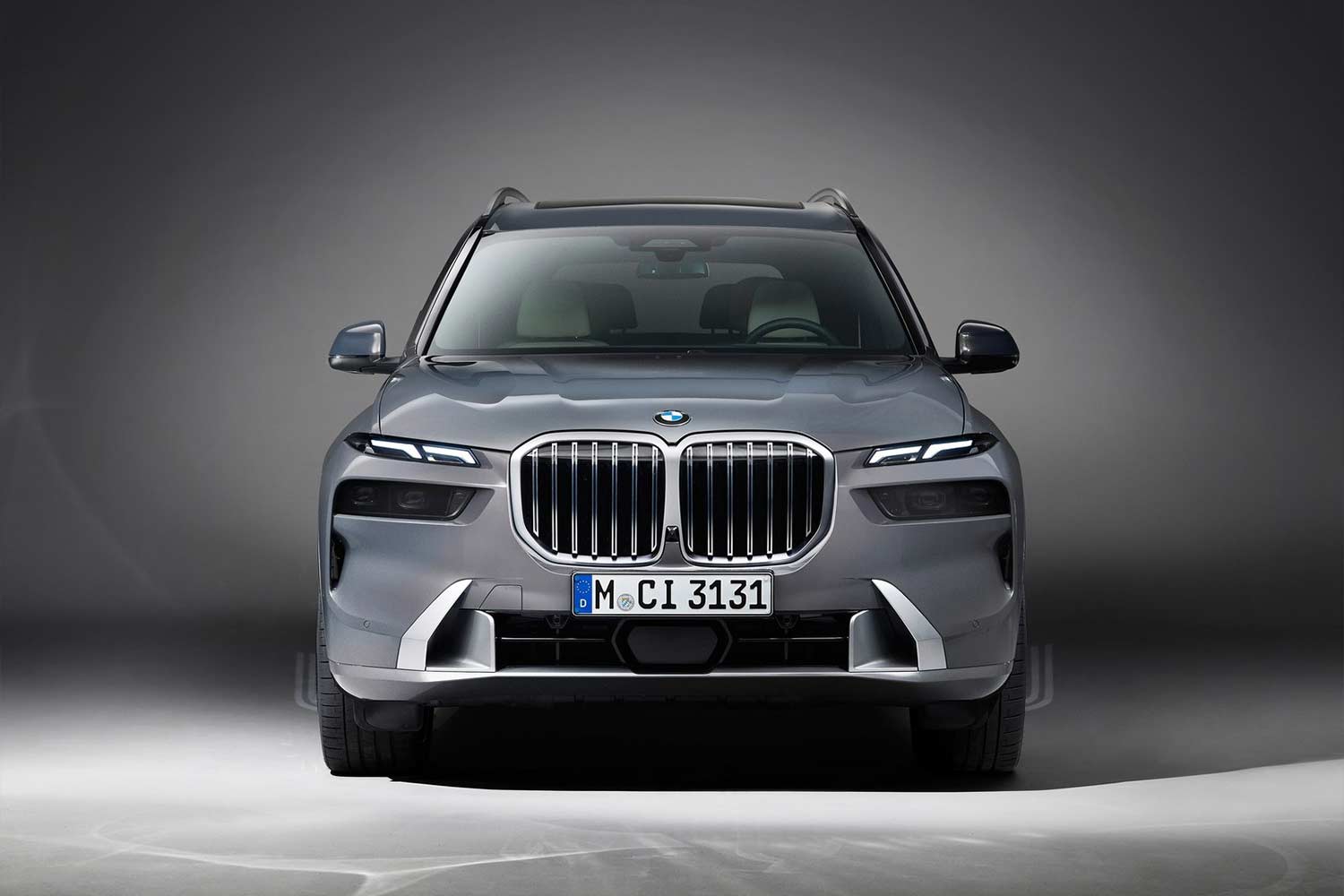









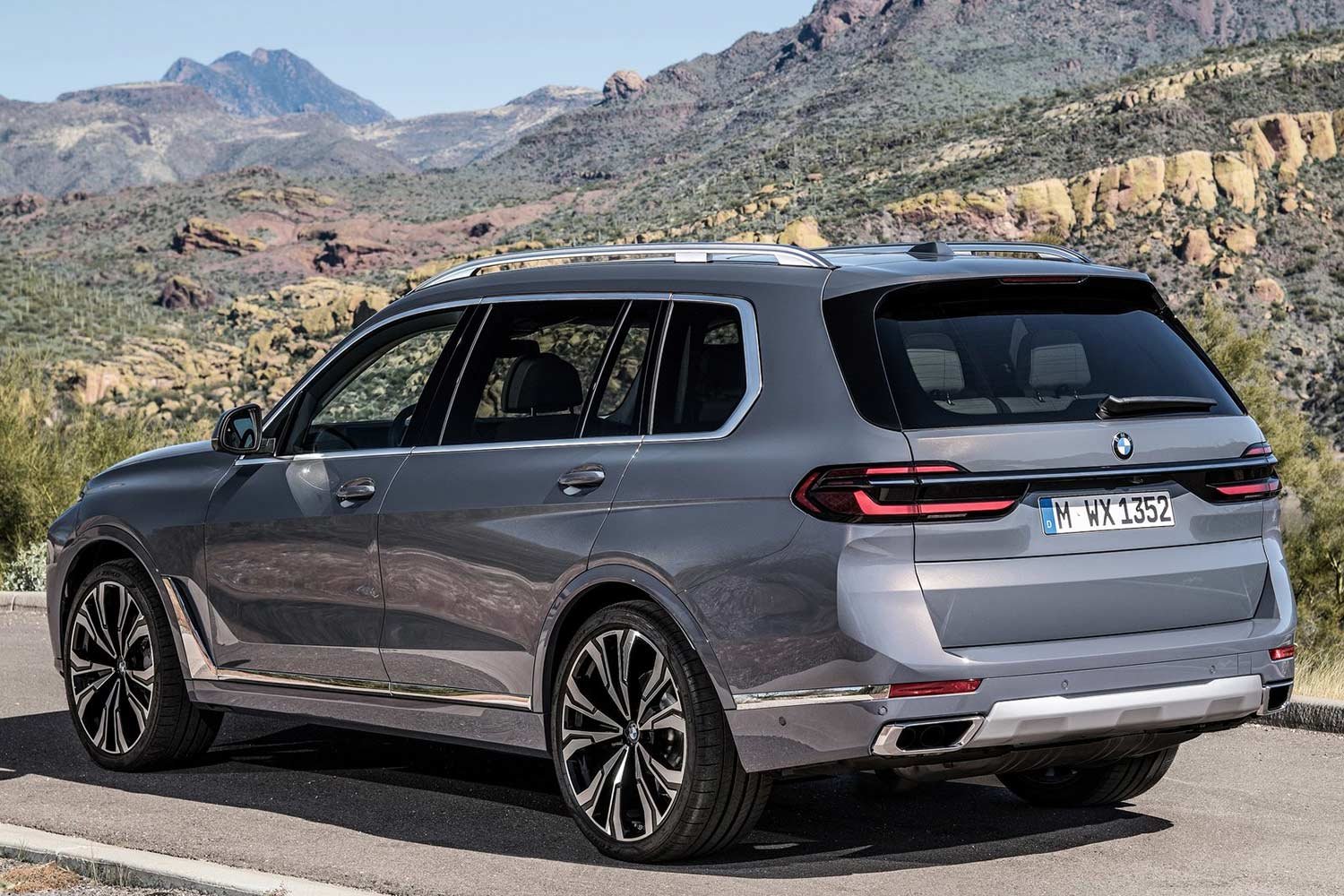
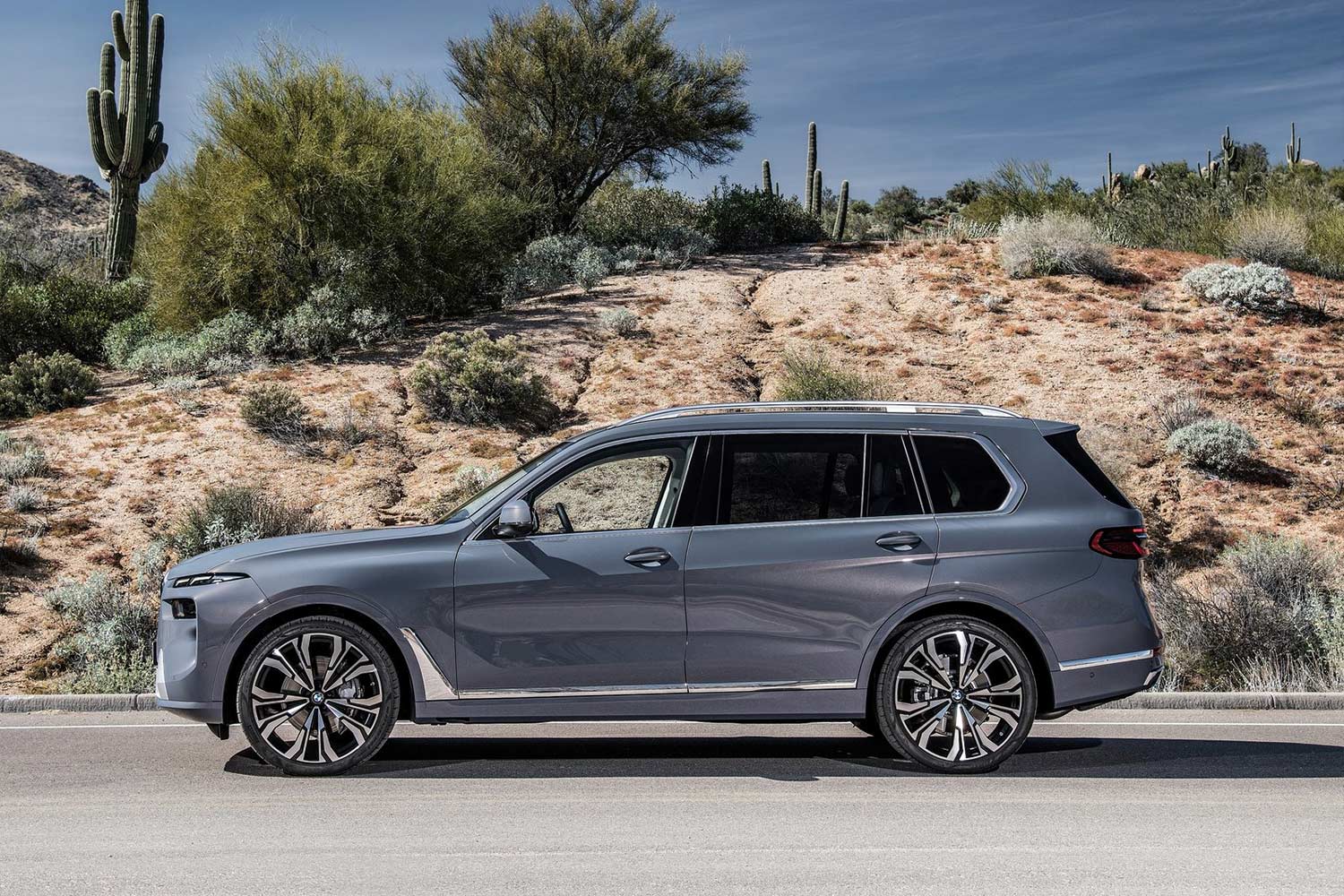
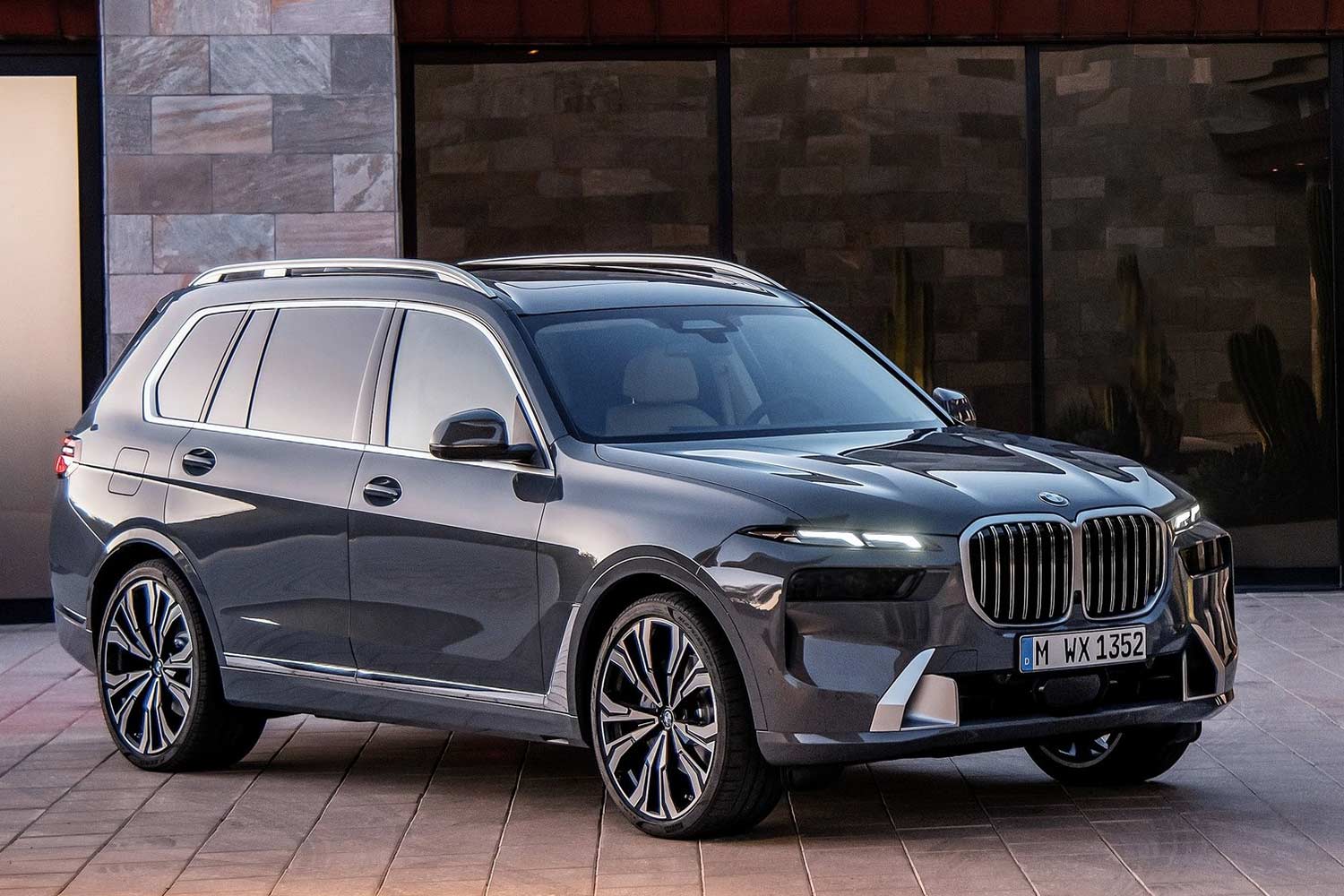







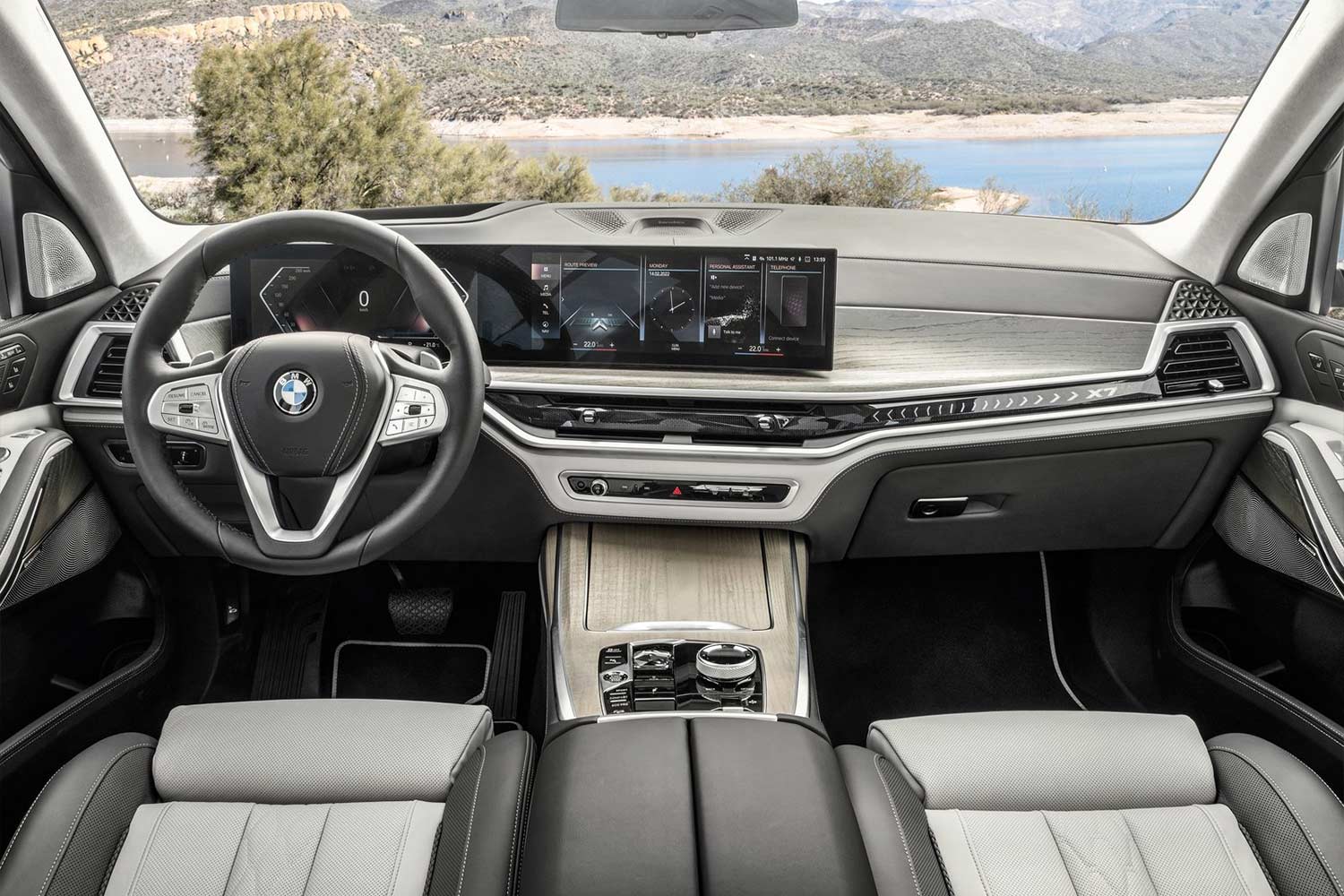
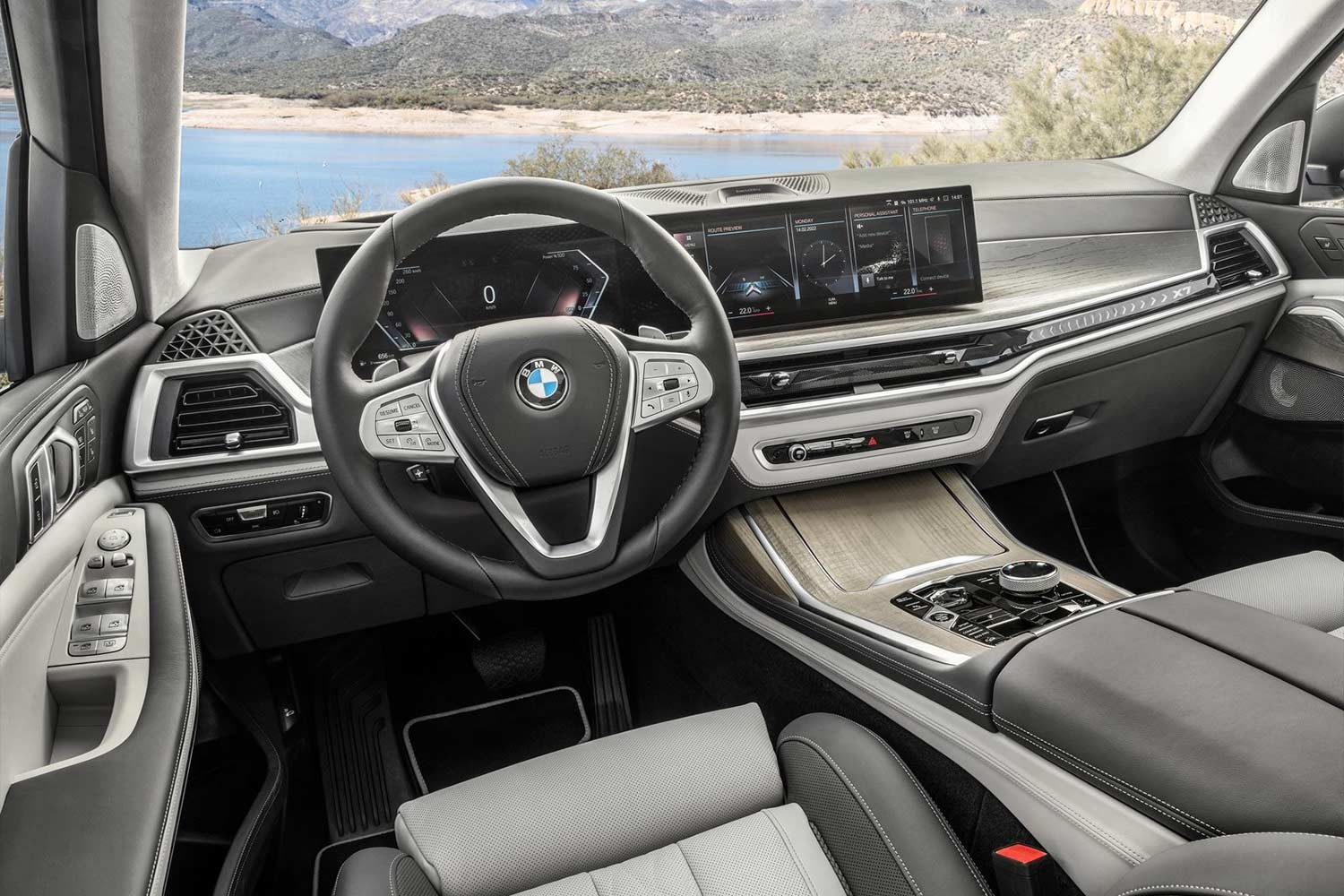




2023 BMW X7 M60i Images:

